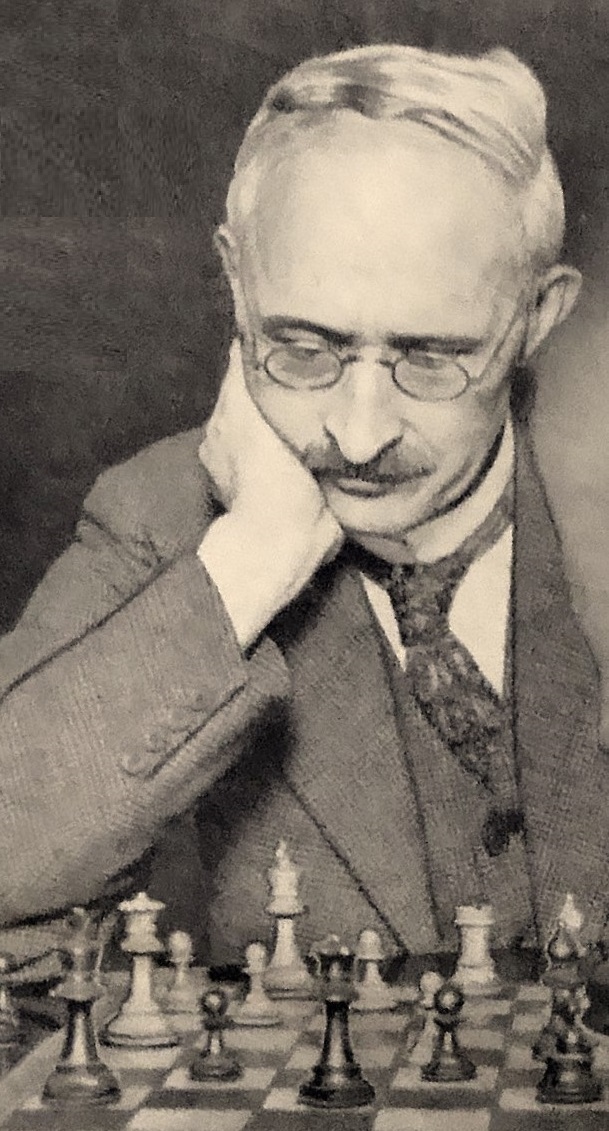
Edward Winter

‘The Wallace murder case might have been devised by Agatha Christie. In spite of recent evidence that seems to point towards a solution, it retains that tantalizing quality of a classic unsolved mystery.’ – Colin Wilson on page 31 of Unsolved Murders and Mysteries edited by John Canning (London, 1992).
For sheer mystery and unsolvability the case has even been ranked by some authors as second only to the Jack the Ripper murders of 1888. Some further observations:
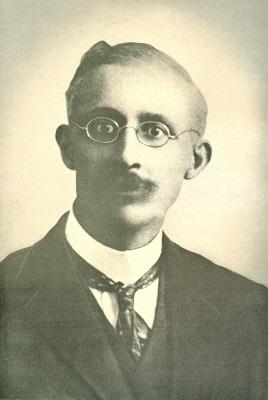
William Herbert Wallace
On the evening of Monday, 19 January 1931 W.H. Wallace, a 52-year-old insurance agent, went to the Central Chess Club in the basement of 24 North John Street, Liverpool, England. The club captain, Samuel Beattie, gave him a telephone message from a call received shortly beforehand: a man identifying himself as R.M. Qualtrough wished Wallace to visit him, on insurance business, at 19.30 the following evening at 25 Menlove Gardens East, Liverpool. Wallace eventually decided to keep the appointment, but no such address existed (although there were streets named Menlove Gardens North, South and West), and he returned to his home (29 Wolverton Street, Anfield, Liverpool) at about 20.45. His wife Julia lay on the parlour floor, bludgeoned to death. From the outset the local press emphasized the mysterious circumstances. For example, the headline above a long report on page 12 of the Liverpool Echo of 21 January 1931 was ‘Baffling Liverpool Murder Nonplusses Police’. Arrested on 2 February for murder, and accused of having created the fictitious Qualtrough to give himself an alibi, Wallace was committed for trial. In court in late April he came over as cold and aloof. Much hinged on intricate evidence on questions of timing (concerning both the Monday and the Tuesday), and only circumstantial evidence against Wallace could be produced. Although the judge, Mr Justice Wright, summed up favourably towards him, the jury found him guilty in little more than an hour, and he received the then mandatory sentence of death by hanging. In an unprecedented development, however, on 19 May 1931 the jury’s verdict was quashed on appeal on the grounds of insufficient evidence. Wallace was freed, continued to protest his innocence, was shunned by many and died of a kidney ailment on 26 February 1933. No motive for the murder of his wife was ever demonstrated, no eye-witness was ever traced, and no murder weapon was ever found. The judge commented that the case ‘must be almost unexampled in the annals of crime’.
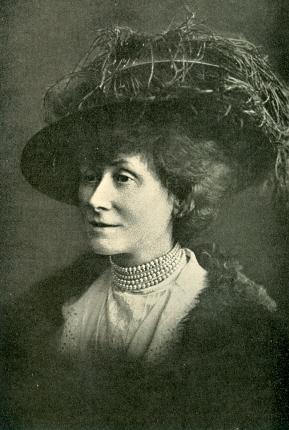
Julia Wallace
The best-known book on the case is the The Killing of Julia Wallace by Jonathan Goodman, first published in 1969. Goodman died on 10 January 2008, and we have been re-reading that work (and particularly the London, 1987 edition), as well as such other volumes as:
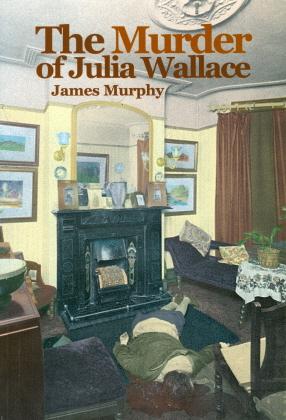
The case was discussed briefly in C.N.s 476 and 599, and now we look at the chess aspects, of which there are many, in some detail.
A key figure in the Monday evening’s events at the club was Beattie:
‘Samuel Beattie, captain of the Liverpool Central Chess Club, had been at the café since six o’clock. As usual on Mondays and Thursdays during the autumn, winter and early spring, he had come straight from work to the café where the chess club meetings were held. Most of the members would not arrive until between half-past seven and eight, but Beattie liked to give himself plenty of time to make sure that everything was ready for the evening’s play.’ (Goodman, page 17)
However, there is no consensus among the books as to how well Beattie and Wallace knew each other (including whether Beattie would/should have recognized the voice of Qualtrough as that of Wallace; see pages 136-137 of Murphy). On page 19 of his book Goodman wrote:
‘Beattie had been friendly with Wallace for eight years – for nearly as long as Wallace had been a member of the chess club, in fact. He liked the man, as did all the other members who knew him. Once you had broken through his slight shyness, his reserve, you discovered that he was a very pleasant fellow indeed. He was by no means a regular attender at the club. Looking back, Beattie supposed that he came along about once every fortnight. He had not been at the club since before Christmas. Wallace had once explained, excused, his infrequent appearances by saying that he did not like leaving his wife alone at night. This seemed a reasonable explanation because, although he was a poor chessplayer, he obviously derived much enjoyment from the game.’
This and other material from Goodman’s book was quoted on pages 95-100 of King, Queen and Knight by Norman Knight and Will Guy (London, 1975). The Central Chess Club was relatively modest, and regarding its members Rowland (page 26) wrote: ‘These people were no Capablancas ...’ On the following page Rowland commented:
‘But at seven o’clock, or shortly afterwards, there occurred the telephone call which was, though no-one realized it at the time, the first of a chain of events destined to lead to one of the most mysterious cases ever to puzzle students of criminology – possibly the greatest mystery since Jack the Ripper startled London.’
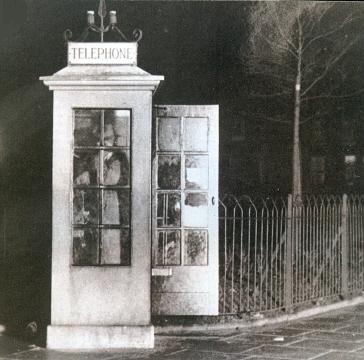
The telephone booth (Anfield 1627) from which Qualtrough called the chess club
On page 20 of his book Goodman quoted part of the telephone conversation between Qualtrough and Beattie as follows:
‘“Is Mr Wallace there?”
“No, I’m afraid not”, Beattie said.
“But he will be there?”
“I can’t say. He may or may not. If he’s coming he’ll be here shortly. I suggest you ring up later.”’ [Qualtrough did not wish to do so.]
Wilkes (page 27) wrote:
‘Several weeks later, in court, Beattie would recall the voice he heard:
Q: “What sort of a voice?”
A: “A strong voice, a rather gruff voice.”
“Is Mr Wallace there?”
“No, I’m afraid not.”
“But he will be there?”
“I can’t say”, said Beattie. He may or may not. If he is coming he’ll be here shortly. I suggest you ring up later.”’
Murphy (page 22) gave a slightly different version of this part of the exchanges:
‘“Is Mr Wallace there? Will he be there?”
“I can’t say”, replies Beattie.
“Can you give me his address?”
“I’m afraid I cannot”, Beattie said.
“Will you be sure to see him?”
“I don’t know”, says Beattie.
“Can you get in touch with him, as it is a matter of importance to Mr Wallace?”
“I’m not sure.”’
Thus Beattie gave no guarantee that Wallace would be present at the club that evening. A question often discussed is whether a third party would have expected Wallace to be there, and an important piece of evidence was the pairing table for the tournament. Here too, though, agreement is lacking among the authors on the conclusions to be drawn, and there is even obvious misstatement of the facts:
‘By 6 November 1930 a small, handwritten notice had been pinned up by the captain of the chess club, a Mr Beattie, on the board beside the telephone in the City Café giving the names of the members selected to play in the second-class tournament which was to begin on 10 November and continue on alternate Mondays until 21 February 1931. Wallace was down to play his first [sic] contest on 19 January.’ (Bridges, page 167)
Left to right: Roland Oliver, K.C. (defence), Mr Justice Wright and Edward George Hemmerde, K.C. (prosecution)
From page 60 of Hussey’s book:
‘It was, one should note, agreed by both prosecution and defence that the caller was certainly the murderer. And the case for that caller being Wallace was obviously the theory hammered home by the Crown, unprovable and highly unlikely though it was.
It was far from a strong case, and Hemmerde was on shaky ground indeed when he stressed that only Wallace could have known enough of his intention of going to the Chess Club on that particular evening and at that particular hour. “Nobody but Wallace knew that Wallace was going to be at the café – no-one!”, thundered Hemmerde.’
In contrast, pages 155-156 of Rowland’s book mentioned that, in his final speech for the prosecution, Hemmerde scored ‘a palpable hit’ with the assertion that nobody could have known that Wallace was going to the club on the Monday evening, by quoting Wallace himself in a deposition with Inspector Herbert Gold:
‘No, I had not told anyone I was going, and I cannot think of anyone who knew I was going.’
See also page 58 of Wilkes. Hussey (page 160) quoted the exchange in court and commented:
‘Here, surely is nice hair-splitting. True, no-one save Wallace could have “known” he was going, but anyone could have felt reasonably sure he was. The chess schedule had been on the bulletin board for weeks.’
On page 61 Hussey wrote:
‘Qualtrough knows that Wallace is an habitual player of chess at the City Café, in fact he knows all of Wallace’s habits pretty thoroughly. There, on the café’s bulletin board ... has been displayed in plain sight for over two months the fact that Wallace is scheduled to play a “championship” match on Monday night, 19 January, at 7.45 – the standing hour for starting play.’
And from page 68 of Hussey’s book:
‘Now Hemmerde had also made a great point in his opening speech about Wallace alone “knowing” that he would be at the Chess Club that Monday night. And again, on this point, Oliver scored cleanly. First, he brought out in cross-examination of the waitress that the club’s schedule of matches (including Wallace’s name) had for weeks been posted in plain sight on the bulletin board of the café. Next, in cross-examining Beattie, he proceeded to bring out that Beattie had fully expected Wallace to turn up at 7.45 on the 19th and had told Qualtrough so on the phone, since that was the thoroughly well-known club hour for the start of “championship” matches. Finally he produced (Exhibit 54) a photograph of the bulletin board scheduling the matches. As Oliver finished, Hemmerde’s overconfident statement that “nobody but Wallace knew” must have been looking rather the worse for abrasive wear. The judge later intimated as much.’
It is unclear why Hussey stated that ‘Beattie had fully expected Wallace to turn up at 7.45’.

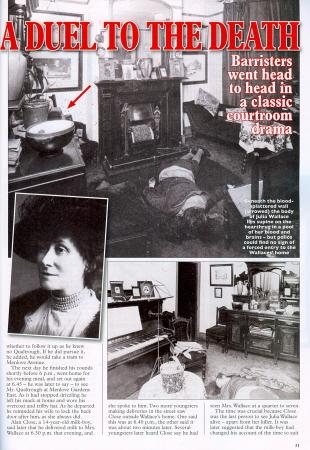
The first two pages of an article by A.W. Moss on pages 30-38 of True Detective, March 2008
An unfortunate characteristic of all books on the Wallace case is their presentation of quotations and dialogue without indication of a precise source in each instance. For example, Wilkes simply provided, on page 14, an all-purpose reference to cover citations in his entire book:
‘Throughout the text all the material in direct quotes is authentic, reproduced from original documents, my two radio programmes, or personal interviews conducted by me.’
Already on page 12 Wilkes had quoted James Agate in Ego 6 (London, 1944): ‘The whole beauty of this case depends upon its chess-like nature. To every move there is a counter-move, equal and opposite.’ However, we do not see that text in Agate’s book. Edgar Lustgarten (who was, incidentally, a brilliant writer) knew Agate well and, on page 204 of Verdict in Dispute (London, 1949), quoted a remark of Agate’s: ‘The great fascination of Wallace is that the case of both sides is unanswerable.’
From an article on pages 47-49 of the magazine Headlines, July 1972
Overall, scholarship seems in short supply, with few primary sources mentioned, and there are surprising discrepancies even over basic facts. In passing we note, for instance, that whereas it has usually been stated that Julia Wallace was roughly the same age as William Herbert Wallace (early 50s), page 623 of The World’s Most Infamous Crimes and Criminals (New York, 1987) asserted that she was ‘five years younger than her husband’. In his book (pages 34-36) Murphy examined her background in some detail before concluding that she was 69 at the time of her death. For some reason an editorial note on page 198 of Raymond Chandler Speaking (published in 1962, three years after his death) took 17 years off W.H. Wallace’s age. On page 44 of Murder on Merseyside by Thomas Slemen (London, 1994) there was a reference to ‘George Wallace’.
Unlike so many other investigators, Murphy (pages 123-124) saw no reason to believe that Qualtrough would know that Wallace intended to go to the club on the Monday evening:
‘Thus, the argument runs, because Wallace was due to play a game on the Monday night, Qualtrough knew that he was to attend the club. During Wallace’s appeal, Roland Oliver reiterated this argument to the appeal judges who, in their summing up, concurred with him that Qualtrough knew that Wallace would attend the chess club. However, the best that could be said was that Wallace was expected at the club to play a game against F.C. Chandler. But expectation is not knowledge.
Had Qualtrough, or anyone else, then or now, perused the list, he would have discovered that Wallace had also been expected at the club on Monday, 5 January to play Mr J. Walsh, on Monday, 8 December to play Mr T. Moore and on Monday, 24 November to play Mr McCartney. But, according to the list he had failed to attend on all three occasions. Had Qualtrough studied the list, he could be forgiven for concluding that the chance of Wallace attending the club on 19 January was negligible.’
And from page 22 of Murphy’s book:
‘The club’s noticeboard, displaying the championship playing order, hangs on the wall, diagonally opposite the café entrance. Adjacent to the board is a public telephone box with the number, Bank 3581, etched on the glass window.’
A set of five photographs of the Liverpool Central Chess Club (source: Merseyside Police):
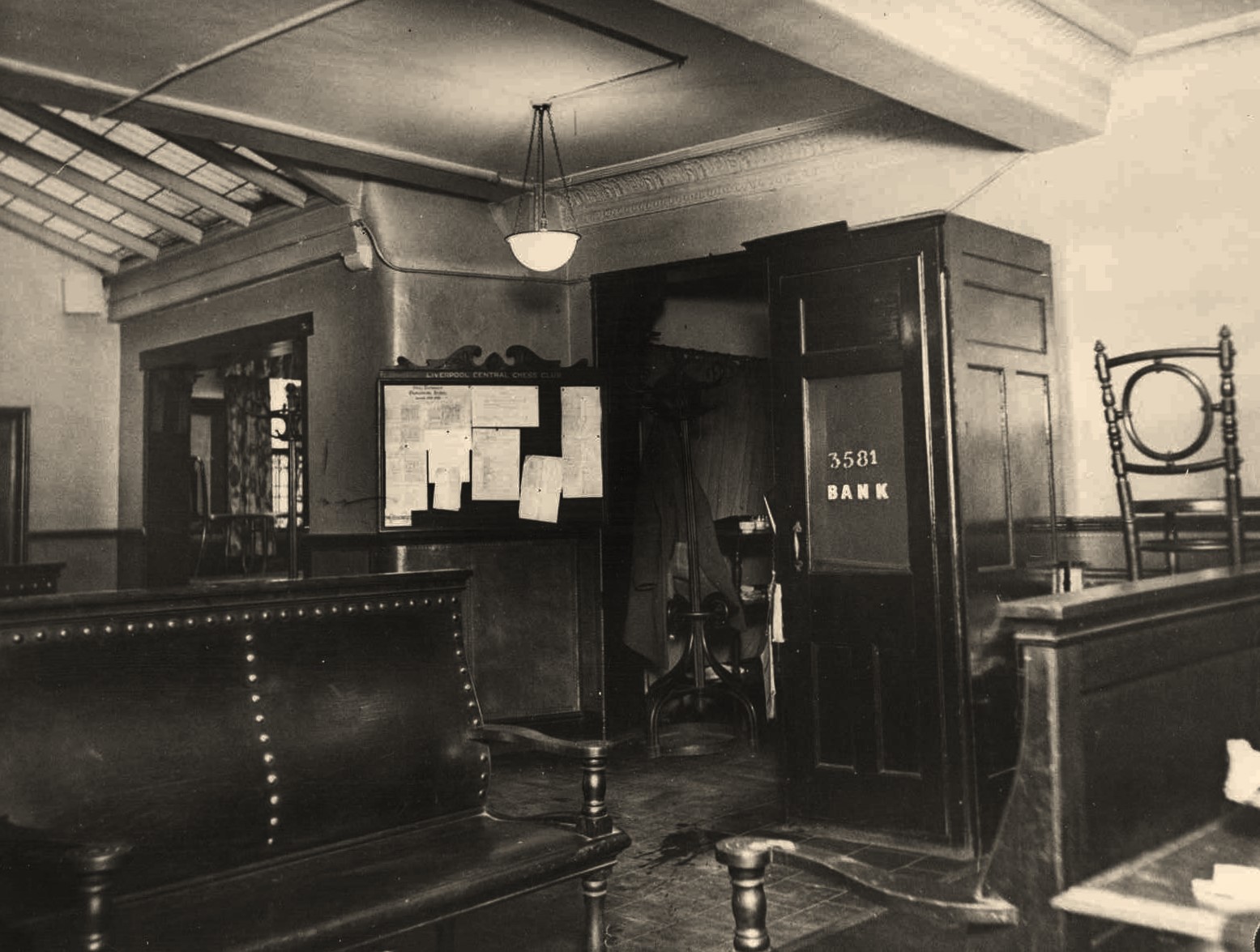
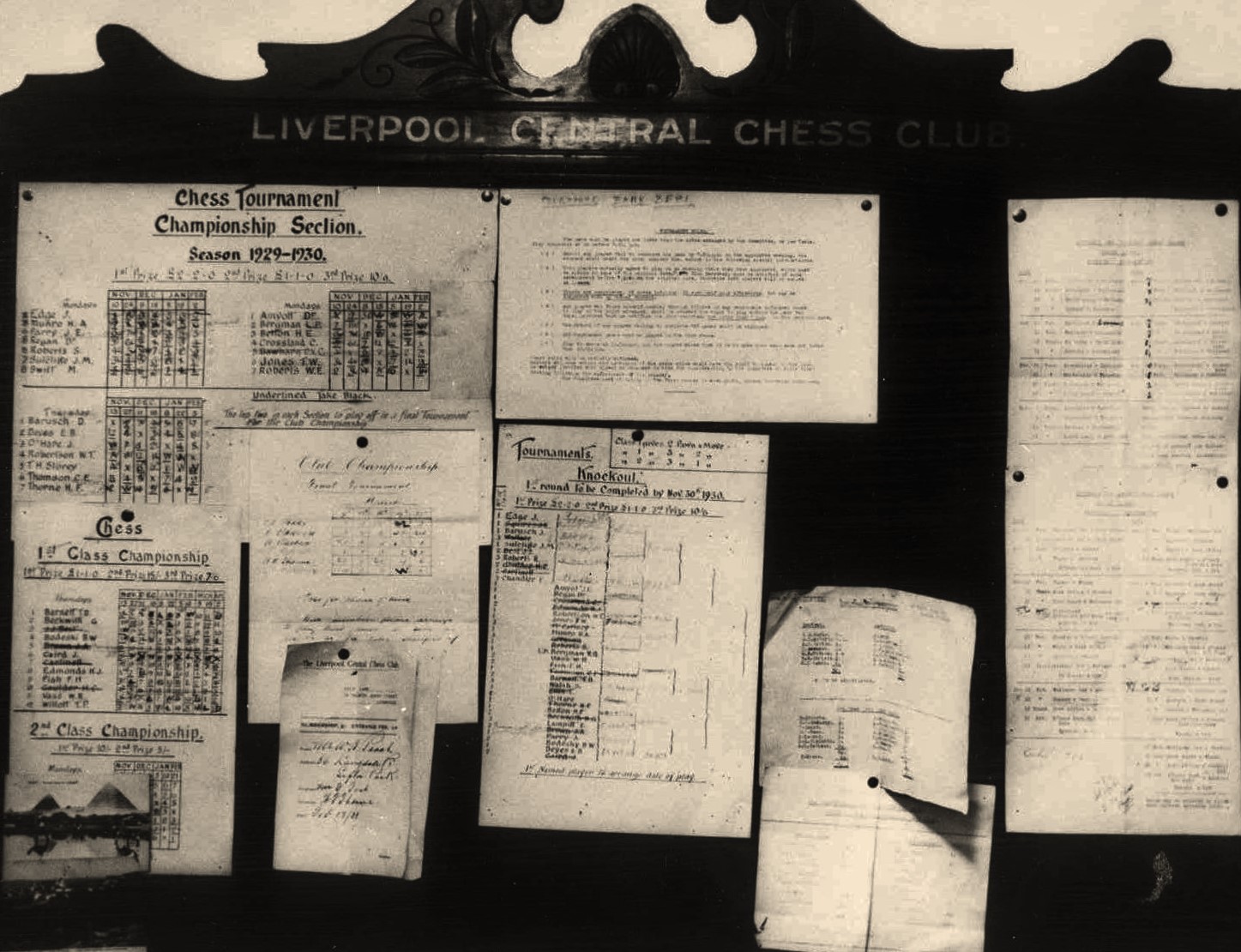
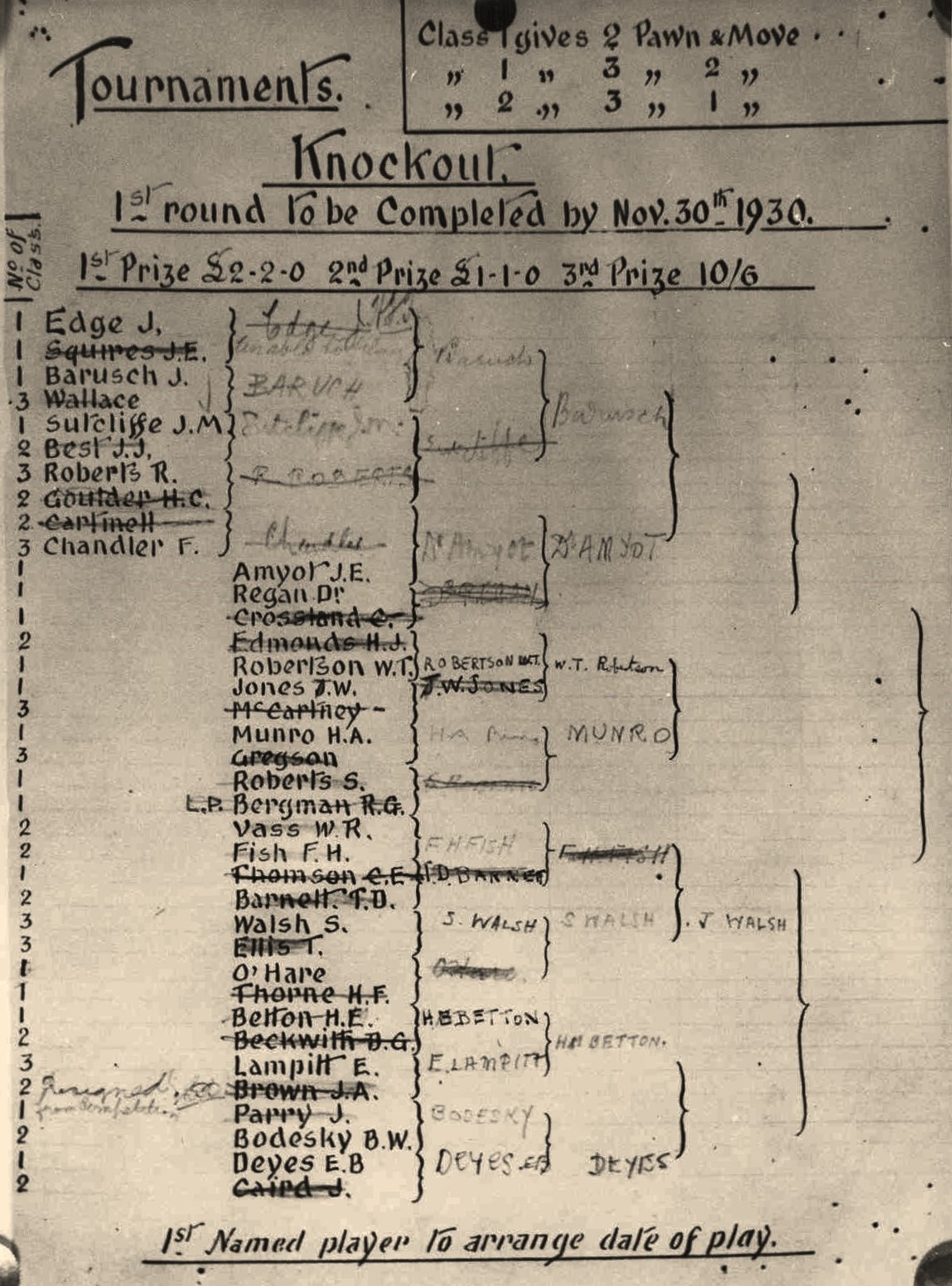

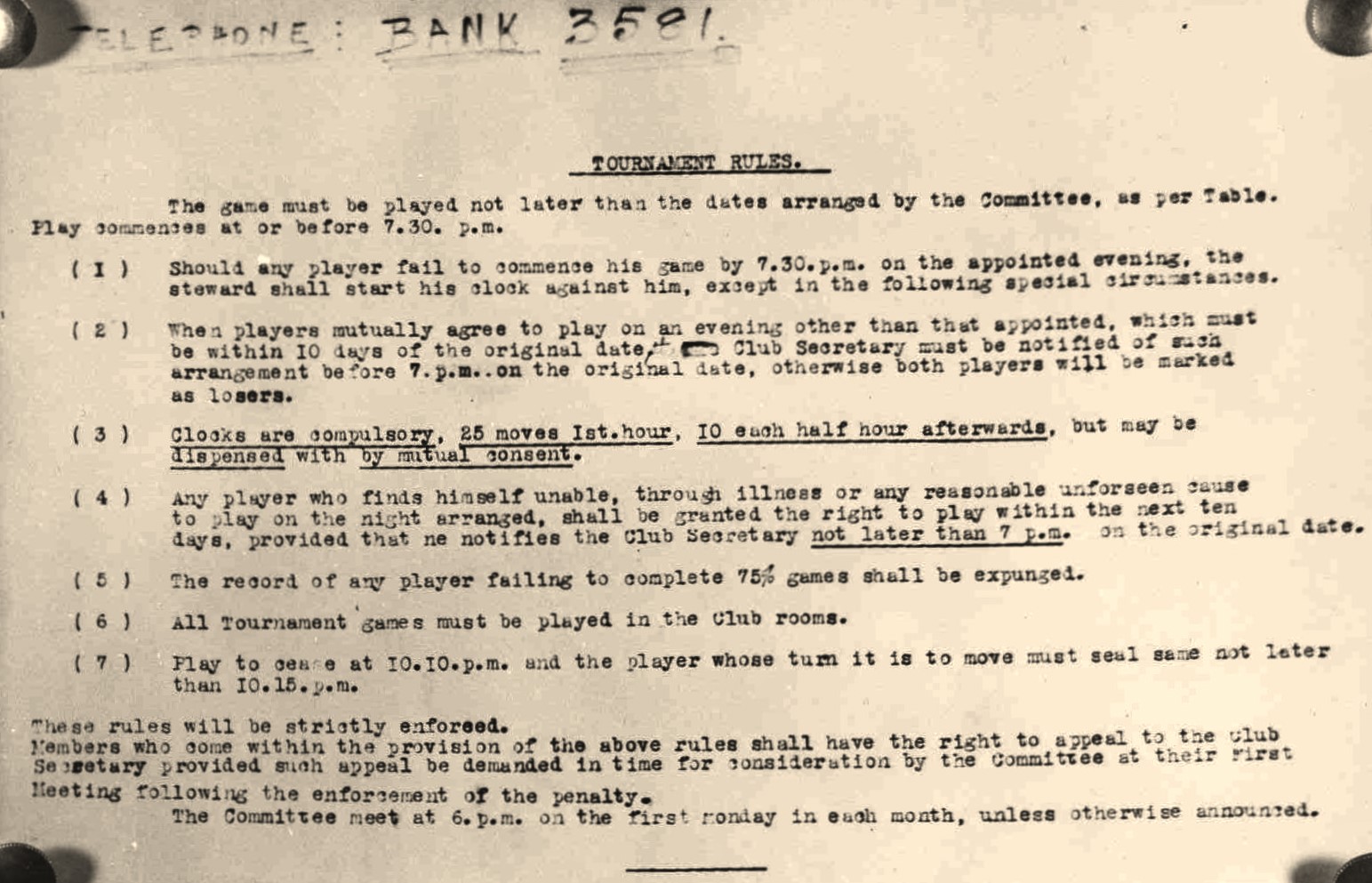
On page 210 Murphy discussed the pairing table in more detail:
Wallace was down to play F.C. Chandler, but absences during the tournament were indeed frequent:‘Thus, on 10 November Wallace played number three player, Mr E. Lampitt. Lampitt lost and had the letter “L” marked in against his number opposite Wallace’s name and Wallace, as the winner, had the letter “W” marked against his number, opposite Lampitt’s name. Two weeks later Wallace was to have played McCartney, but the game was not played; no letters L and W were written by the names ...
... And it is the list, and the information it gives, that is important to Qualtrough. The list states that Wallace had not been at the club since 10 November. Why, after perusing the list, should Qualtrough conclude that Wallace would attend on 19 January?
Goodman [page 18] reproduces a facsimile of the playing list which is inaccurate, and which does not contain the relevant indicators of Wallace’s failure to play his tournament games. ... Wilkes reproduces a photograph of the list but fails to see its significance.’
‘As it happened, Wallace arrived at the café to find that Chandler, the man he was due to play, was not present. After chatting with James Caird, he arranged to play an outstanding match in the second class championship with a Mr McCartney. The club rule concerning the pre-7.45 start still applied to this rearranged fixture, and at about 7.50 when Beattie went over to deliver the message, Wallace and McCartney were deeply involved in the game.’ (Goodman, page 285)
From page 29 of Wilkes:
‘James Caird arrived at the City Café at about 25 to eight. He knew that tonight was another round in the club’s second-class championship, and that he was not paired to play. But he’d come along anyway, on the off-chance of a casual game with anyone who would join him. He strolled around the various tables for several minutes watching the games progress. Caird was a grocer, living not far from Wallace in the same part of Anfield. The two men had known each other for years. So when, at about a quarter to eight, Caird saw Wallace arrive and hang up his hat and coat, he ambled over.
“Evening, Wallace. Care for a game?”
But Wallace explained that he was down to play a tournament match against a man called Chandler. He wanted to get the game wiped off because he was already in arrears.
Wallace moved away, threading his way between the tables in search of his partner. It seemed that Chandler hadn’t turned up, so Wallace sat down to play a game with an opponent called McCartney. Caird – who was in a class above Wallace at chess, and therefore ineligible to play him in tournaments – stood and watched the opening moves.
After some minutes Caird mooched over to where Beattie was engrossed in his match with Deyes ...’
Caird then pointed out to Beattie that Wallace was present, and Beattie went across to give Wallace the telephone message.
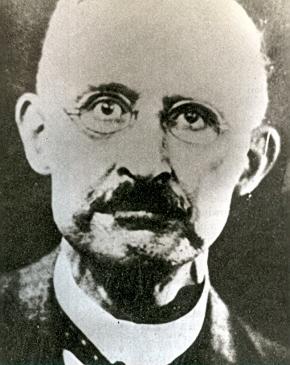
William Herbert Wallace
Wilkes (pages 94-95) discussed a list, prepared by Inspector Herbert Gold, of reasons why Wallace was suspected of murdering his wife:
‘The list starts with the telephone call to the chess club. Gold points out that membership was very limited, and the number was not listed in the telephone directory. Moreover, Wallace was only a casual attender, he had not been there for at least a fortnight before the killing, and an unknown murderer would have scarcely relied on Wallace receiving a message telephoned to the club. It was plain that the message had been sent from a call box about 300 yards from Wallace’s own front door within, on his own admission, a few minutes of his leaving home for the City Café. The call box was by a tram stop where Wallace could have boarded a car to get him to the chess club in 20 minutes or so. On the other hand, assuming the murderer to be not Wallace but “Qualtrough”, such a shadowy figure could have watched Wallace leave home on the night of the murder, entering the house and attacking Mrs Wallace without any resistance. Either Wallace sent the message himself to establish an alibi, or the message was a deliberate ploy to get Wallace away from the house. This was possible, the police argued, if Qualtrough had good grounds for believing Wallace would go to play chess that night, and would run the risk of the message being delivered.’
Wallace won his game against McCartney, and the Qualtrough matter continued to be pondered:
‘It is after ten o’clock and most of the games are over. Wallace and some of the other members leave the café together ... Wallace is talkative, highly delighted at his win over McCartney, taking Caird through the endgame move by move.’ (Murphy, page 25)
‘Even while at the club, Wallace had puzzled with Beattie and another member, Deyes, over the unfamiliar Menlove Gardens address. On the way home, accompanied by fellow-members Caird and Bethurn, he further maundered on about the subject ...’ (Hussey, pages 18-19)

29 Wolverton Street, Liverpool, where Julia Wallace was killed
Wilkes (page 89) reported that ‘Caird and his wife were on friendly terms with the Wallaces; friendly but hardly intimate’ and that ‘Caird was a fairly frequent visitor at Wolverton Street for games of chess. “I think the last time I was there was in October 1930”, said Caird.’

Real-Life Crimes, volume 6 part 76, published in 1994
On the evening of Thursday, 22 January 1931, two days after the murder, a conversation took place between Beattie and Wallace, in the presence of Caird. From page 85 of Rowland:
‘Mr Beattie, the man who had taken the telephone message from Qualtrough, turned around and saw Wallace, who rapidly came towards him, and said: “Oh, that telephone message, can you remember definitely what time you actually received the message?”
Beatie thought. ... He eventually replied: “Well, seven or shortly after.”
“Can’t you get a bit nearer than that?”, Wallace persisted, apparently feeling that the exact timing of the message was a matter of considerable importance.
“I’m sorry, but I can’t”, Mr Beattie said. (His evidence later at the trial showed, incidentally, that his reluctance to pin himself down to a close and accurate time was genuinely a matter of not being certain of the time.)
“Well”, said Wallace, looking a little perturbed, “it is important to me, and I should like to know if you can get any nearer to it than that”.
“I’m sorry, I couldn’t”, said Mr Beattie again, and there the matter was allowed to drop.
... Nothing [more] was said which could be regarded as of the slightest importance until just before they parted:
Then Wallace said: “I have just left the police; they have cleared me.”
“I’m very pleased to hear it, very pleased”, replied Mr Beattie. And on this friendly note the group broke up.
Wallace himself had certainly realized that he was under suspicion. Why he should have taken it upon himself to inform Mr Beattie that the police had cleared him was a point which was never explained at his trial.’
See also pages 68-69 of Wilkes and page 167 of Hussey. Whether by accident or design, Qualtrough had, in fact, used the telephone booth in such a way that the time of his call was recorded by the Anfield telephone exchange: 19.20.
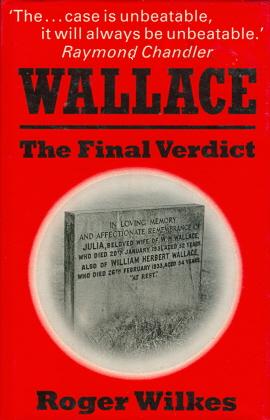
During the police investigation and the trial, which began on 22 April and ended on 25 April, all the parties were called upon to state their recollection of what had happened at the club:
‘In addition, statements are taken from James Caird and Thomas McCartney at Cottle’s City Café, about the events at the chess club on Monday, 19 January, in particular Wallace’s reaction to the Qualtrough message and the address at Menlove Gardens East. Caird, as well as detailing his own movements on the night of the murder, also provides confirmation of what occurred between Wallace and Beattie on the Thursday night.’ (Murphy, page 70)
‘For the defence, Oliver argued that Qualtrough was a thief who, knowing Wallace would be at his chess club on the Monday night, had planned to lure him from his home on Tuesday night in order to steal his insurance takings; that in the course of the theft he killed Mrs Wallace; that Wallace could not have had the time in which to kill her and that anyway, he was a loving husband who had no motive whatsoever to murder his wife.
The witnesses for the Crown were put through their paces by Hemmerde and cross-examined by Oliver in turn. For the events of the Monday night the arguments centred on the telephone call and Wallace’s presence at the chess club: whether Wallace himself had made the call; or whether Qualtrough had made it, having ascertained from the playing list on the club’s noticeboard that Wallace would attend the club.’ (Murphy, page 86)
On page 119 Murphy suggested that, if robbery were the motive, it was unnecessary for the murderer to make a telephone call to the chess club:
‘How much simpler, how much more lucrative it would have been, for Qualtrough to have slipped a note to Wallace through his front door on Monday, 12 January [sic – an intentional reference to the previous week], asking him to call at 25 Menlove Gardens East the following night.
That Qualtrough chose Wallace’s putative attendance at the chess club, rather than the night when he could maximize his gain, as the starting point for his plan, again testifies to the fact that robbery was not a significant motive in the crime.’
It remains to be discovered what became of Samuel Beattie, whom Rowland (page 27) described as the ‘manager of a cotton-broking firm’. Wilkes (pages 256-257) related his unsuccessful attempts to research the life of Beattie. The only picture that we have traced so far is an artist’s impression (which may be pure imagination) on page 2 of the Sunday Chronicle, 8 May 1955:
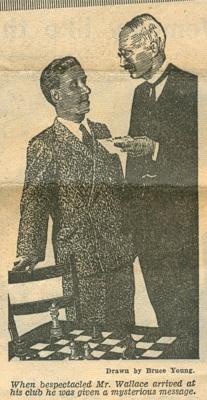
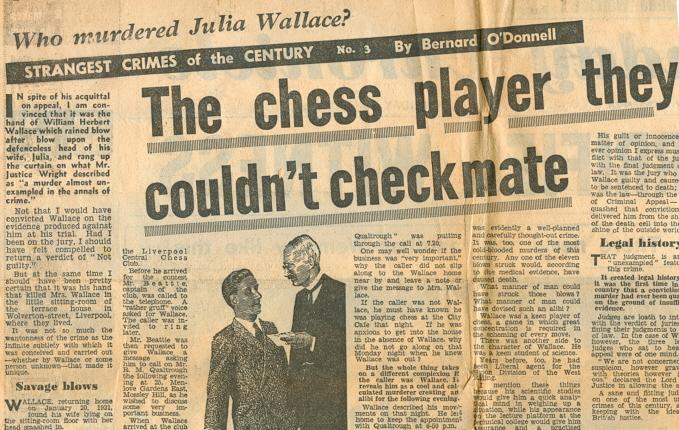
[On 3 March 2008 a correspondent, Rod Stringer (Liverpool, England), suggested to us that the drawing of Beattie was based on the photograph of Hector Munro shaking hands with Wallace which is given later in the present article.]
We should also like to establish basic biographical details about the other club players named in the case, such as James Caird (whom Goodman described, on page 175, as ‘an excellent witness for the defence’). Nor has further archive information yet been found about the club or, even, the final outcome of the tournament. From page 26 of Rowland’s book:
‘The first prize for this championship was ten shillings and the second prize five shillings. History does not record what position Wallace occupied in 1931, and whether he succeeded in winning either of the prizes.’
It is, of course, certain that he did not.
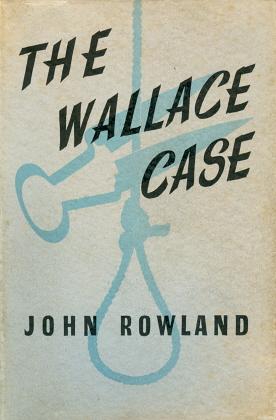
Wallace was not the only suspect. A curious reference which we are currently unable to explain appears on page 48 of Six Trials by Winifred Duke (London, 1934): ‘... Mr Qualtrough, whose real name was subsequently suspected to be Harris.’
[Rod Stringer pointed out to us on 3 March 2008 that the common Welsh surnames Harris and Parry both mean ‘son of Harry’. The question which thus arises is whether Winifred Duke’s use of ‘Harris’ was intentionally cryptic, perhaps because of libel laws.]
Books exist which assert that Qualtrough was Richard Gordon Parry, with whom Wallace had had some conflict, although Waterhouse’s volume suggested that Wallace and Parry collaborated on the crime.
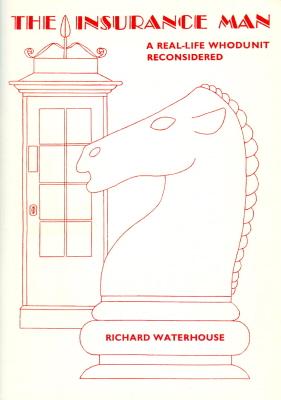
As regards Parry, Goodman wrote on page 306:
‘He may have had any, or all, of three motives for the crime – financial gain, revenge and/or sex. He knew that Wallace was a member of the Central Chess Club and, as a frequenter of the City Café, could have looked at the notice-board to see when Wallace was due to play a match.’
Suspicions about Parry were also expressed by Wallace himself, whose statement was quoted on page 186 of Murphy’s book (dated ‘22/11/31’, but ‘22/01/31’ was clearly meant):
‘I have often seen him since he has been working for his new company and have spoken to him. About last November I was in the City Café one evening, I think it was on a Thursday, playing chess, and I saw Parry there. He was not playing chess. He was by himself walking across the room. I said “Good evening” and he returned my greeting. I think that was the last time I saw him. He is a member of an amateur dramatic society which holds its meetings at the City Café on Thursday evenings.’
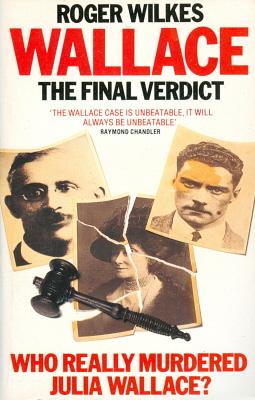
Richard Gordon Parry is on the right
Another question that has occasioned much debate is Wallace’s prowess, or lack thereof, as a chessplayer. Its relevance, though, is essentially limited to two aspects: 1) the insights that any claims made by Wallace may provide into his character and 2) whether any public perception, however misguided, of chessplayers as fiendishly clever operated to Wallace’s disadvantage during the trial. On page 36 of his above-mentioned essay on Wallace, Colin Wilson wrote:
‘Yseult Bridges, who also wrote about the case, became convinced of Wallace’s guilt when she read a series of “ghosted” articles about his life which appeared in John Bull in 1932. There Wallace remarks that he had matched his brains against some of the greatest chessplayers in the world. Yseult Bridges comments that “he was never more than a third-rate player in an obscure little club”, and concludes that Wallace was a pathological liar. But another writer, Jonathan Goodman, looked more closely into the matter, and concludes (in The Killing of Julia Wallace) that Wallace was telling the truth after all; in the 1920s he had played in “simultaneous exhibition matches” against world-famous players like Capablanca and been thoroughly beaten.
Kenneth Gunnell, a parliamentary candidate from Redruth, Cornwall, independently discovered that Wallace was telling the truth about his chess opponents ...’
The essay by Wilson also appeared on pages 85-94 of his book World Famous Unsolved Crimes (London, 1992).
Below is the exact text attributed to Wallace (‘in one of his effusions for the Press’) on pages 260-261 of Bridges’ book:
‘Chess was one of the passions of my life. Liverpool was a great chess-playing centre, and I was well known in the circle. I have no-one to play chess with now. But some evenings I get out my board, put the pieces on the squares and settle down to working out difficult problems.
A minute or two passes. Then I, who in the past have matched my brains against some of the greatest players in the world, realize that I am not concentrating on the board, though I sit staring at it. Some shadow seems to rise between me and my beloved game.
I suddenly draw back. I know what it is. Chess is mixed up now with the terrible drama of my life. Even my proficiency in my hobby was used as a weapon against me ...
Can you wonder, then, that when I sit alone in the evenings with my chess board in front of me, the shadow of the dock, the shadow of the Judge in the black cap – yes, even the shadow of the scaffold itself – rise up before my eyes. I push away the chess board, as I have already pushed away the microscope.’ [Wallace was also interested in science.]
A footnote by Bridges on page 261 read:
‘He was never more than a third-rate player ... in an obscure little club. This gives the clue to all the rest of his pretensions.’
Goodman reacted as follows on page 277 of his book:
‘But does it? Actually, no.
For two reasons:
‘First: Wallace had “matched his brains against some of the greatest players in the world” – although, admittedly, it was always a pretty unequal contest. In the ’20s he had played in “simultaneous exhibition” matches when chess masters like Capablanca, Kashdan and Blackburne visited Liverpool and took on all-comers.
Second: The John Bull articles were not written by Wallace. He was paid a fee for the use of his name, and for providing some information about his early years, very little of which was used by the journalist who “ghosted” the series. It was a rush job, and Wallace did not even see what he was supposed to have written until the series appeared in print. (This fact, incidentally, makes nonsense of quite a lot that has been published about Wallace in the past 30 years or so.)’
William Herbert Wallace
On pages 143-144 of his book Hussey too was critical of Bridges’ claims about Wallace:
‘And he loved chess, though it is clear, says one chess master, that he played an execrable game.
Wallace-ite Bridges, however, points out what she designates as the farcical “pretentiousness” of a published article mentioning chess which reads: “I, who in the past have matched my brains against some of the greatest players in the world ...” This, she glibly argues, gives the clue to the falsity of all his diary entries and writings – a view that seems somewhat to overlook the certainty that poor Wallace, the chess dub, could still have worked on end-games and problems, by perhaps Alekhine or Capablanca, as readily as might any veritable master. A cat can look!’
It is unclear on what grounds Alekhine, Blackburne, Capablanca and Kashdan were mentioned, as no connection between Wallace and any of them can be offered here. Kashdan’s seems an especially strange name for anyone to quote in this context. The lack of precise references and sources in books on the Wallace case is once again a grave impediment, and we should welcome assistance in drawing up a list of all references to chess in texts in Wallace’s name, whether ghosted or not.
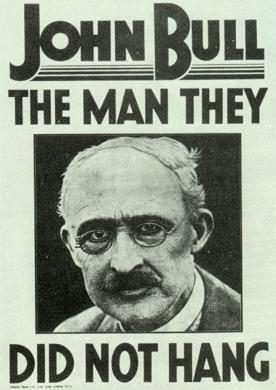
A poster announcing the (ghosted?) writings of Wallace
Although Bridges denounced Wallace for vainglory in the ghosted John Bull articles, on page 253 she herself quoted Wallace’s own (modest) assessment of his chess skill in his diary, but she omitted a sentence of his which underscored that modesty:
‘6 November 1930. The tournaments [chess] are now up, and I see I am in Class Three [sic]. (This about represents my strength of play.) I suppose I could play better, but I feel it is too much like hard work to go in for chess wholeheartedly: hence my lack of practice keeps me in a state of mediocrity – good enough for a nice game, but not good enough (but no good) for really first-class play.’
The rounded brackets above indicate the text of the diary entry as it appeared on page 278 of Wilkes’ book, but not in Bridges’ volume.
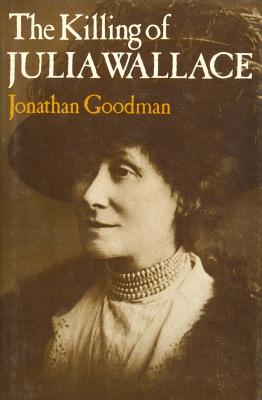
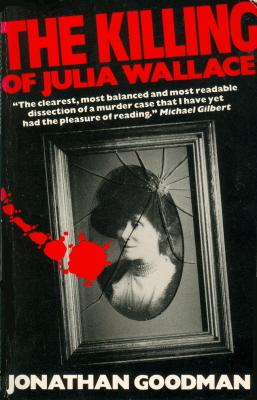
The public perception of Wallace as a chessplayer was discussed by Goodman (page 102):
‘As for Wallace being a chessplayer: this was interpreted to mean that he was able to devise a far more cunning murder plan than the average citizen. It was reported that he was “a master player; a man with a mind as brilliant as it was perverted, trained to think ahead to the next moves, and to anticipate the moves which his opponent would make”.
Before long people were saying that only a brilliant chessplayer such as Wallace could have conceived and carried out the scheme to murder his wife; therefore, unless the police discovered another suspect equally expert at the game, Wallace’s guilt was a foregone conclusion.
The only people, it seems, who did not subscribe to this notion were those who had had the misfortune to play chess with Wallace. They knew that, far from being “brilliant” at the game, he was a very poor player indeed. His victory over Mr McCartney, the night before the murder, gave him tremendous pleasure – and no wonder, considering the novelty of the experience. At the time of the case a member of the Central Chess Club called Wallace a “chess-vandalist”, adding that “the best one can say about him is that he is an enthusiastic duffer”. Another member – a true devotee, this one – remarked, “The murder of his wife apart, I think Wallace ought to be hanged for being such a bad chessplayer.”
The idea that Wallace planned his wife’s murder like a game of chess was still very much in the air when he stood trial for his life. Afterwards (and in all seriousness, apparently) a Liverpool barrister asked Wallace’s solicitor why the defence did not call expert evidence to prove how poor a player Wallace really was.’
Once again, it will be noted, readers of books on the case are merely given unsubstantiated and unattributed quotes.
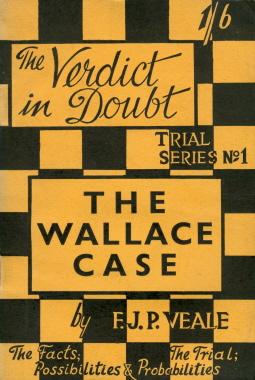
Having quoted Sherlock Holmes’ famous comment about chess being a mark of a scheming mind, F.J.P. Veale wrote on page 7 of his very scarce booklet The Wallace Case:
‘True, Wallace could hardly be said to excel at chess. He was a member of a chess club with apparently no very high standard of play and was not ranked even among the best players in this club. Still, even an addiction to playing chess may be accepted as evidence of a reflective, if not a scheming mind.’
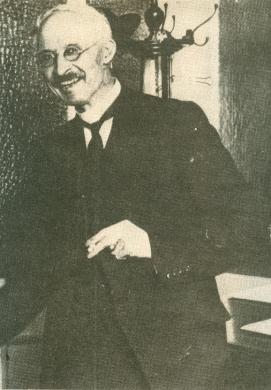
William Herbert Wallace
After Wallace’s sentence was quashed, he tried to resume his previous lifestyle:
‘He continued to work at the Liverpool head office of the Prudential. Each day he lunched at the City Café – but “the men with whom I have won and lost at play so often, with whom I have ... exchanged views on topics of the day over coffee and cigarettes, pass me with heads tilted away from me ... I suppose this feeling against me will probably persist for some time and I may never really live it down. Well, after all, so long as I know I am innocent why should I worry?”’ (Goodman, page 266)
Wallace continued to receive much unfavourable press attention. From page 269 of Goodman:
‘Perhaps the worst libel of all was contained in an article “The Crime at 29 Wolverton Street”, which appeared in the May 1932 edition of a magazine called True Detective Mysteries.
A photo-montage was given a centre-page spread, with Wallace standing on one side of a chess board, [Detective Superintendent] Hubert Moore on the other. Beneath the picture of Wallace a caption invited the readers to “observe his long, tapering fingers”. The chess analogy was continued in the article, the implication being that Wallace, the master, thinking out his moves in advance, had had little difficulty in outwitting a bone-headed Moore. (Come to think of it, the article provided as many grounds for Moore suing the magazine as it did for Wallace.)
But the printers and publishers of True Detective Mysteries were in luck. The writ against them was not issued until February 1933. Before the statement of claim could be discussed in chambers the plaintiff died.’
More information about that magazine item is sought. Can the reference be verified? We have the May 1932 issue of True Detective Mysteries, a New York publication, but it contains no such Wallace material.
Gerald Abrahams, who was a chessplayer, barrister and Liverpudlian, made a number of comments on the case. The following two passages appeared respectively on pages 148 and 149 of Hussey’s book:
‘It is perhaps significant that one barrister-commentator, Gerald Abrahams, says of Oliver’s defence of Wallace that a “defence that could, and should, have been declaimed on a high note was soft-pedalled”.’
‘In According to the Evidence, barrister Gerald Abrahams of Liverpool puts the Wallace prosecution succinctly: “To any objective observer, the hypothesis which is the prosecution’s case is something so intrinsically difficult of acceptance that the defence does not seem to matter. Putting the prosecution at its highest, it leaves doubt.”’
Gerald Abrahams
On page 171 Hussey wrote: ‘Barrister Abrahams states: “The judge ... summed up strongly for acquittal.”’ He did indeed, and it is perhaps surprising to find the following on page 309 of Goodman:
‘A few years before his death, in an interview with a Liverpool Echo reporter, he [Mr Justice Wright, who took the title Lord Wright of Durley] said:
“Never forget that Wallace was a chessplayer. ... I should say that, broadly speaking, any man with common sense would have said that Wallace’s alibi was too good to be true, but that is not an argument you can hang a man on.”’
Lord Wright died in 1964, but no precise source for the Liverpool newspaper interview was supplied by Goodman.
In C.N. 11011 our correspondent Gerard Killoran (Ilkley, England) provided the article, which was by Robert Jackson and was published on page 8 of the Liverpool Echo and Evening Express, 27 November 1958:
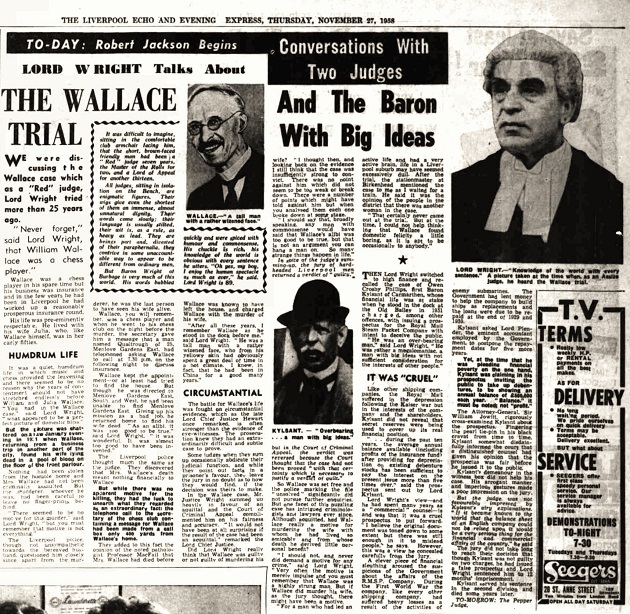
We have found that on pages 182-183 of his book Legal Essays and Addresses (Cambridge, 1939) the judge wrote that the Wallace case ...
‘... was mainly interesting as presenting a series of interim probanda, the total effect of which was said by the prosecution to be to establish the final probandum of guilt: but at each stage of the prosecution’s case there was the opponent’s alternative explanation, so that, as I thought and the Court of Criminal Appeal thought, the final inference of guilt could not safely be drawn from the complex mass, and the prisoner was finally acquitted by the Court of Criminal Appeal, which quashed the jury’s verdict of guilty.’
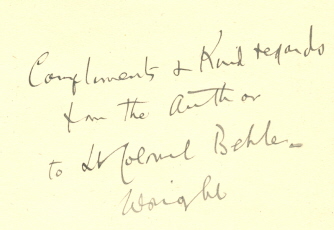
Inscription by Mr Justice Wright (later Lord Wright of Durley) in our copy of Legal Essays and Addresses
Gerald Abrahams’ treatment of the facts of the case was hardly error-free. For example, on page 63 of According to the Evidence he gave the wrong year for the crime: ‘The murder of Mrs Wallace took place late in 1930 ...’ On pages 64-65, in a paragraph discussing the evening of the murder, the timings stated by Abrahams were all an hour out (six times).
We note too that Abrahams also discussed the case on pages 151-154 of his book The Legal Mind (London, 1954). After describing the basic facts, he wrote of Wallace:
‘And there were other equally powerful arguments, such as that the man was a chessplayer (to the author’s knowledge the worst that ever moved a pawn) and consequently capable of concocting great schemes of devilry and deception. The jury was of a type that could not recognize a non sequitur.’
Abrahams provided the following analysis:
‘Journalists have agitated their readers for many years with the question: was Wallace guilty?
There are three approaches to this question:
(1) Legally, it is academic. There was no evidence against him.
(2) Personally. His acquaintances (excluding those who revel in the troubles of their “friends”) seem convinced of his innocence. The author takes the view that to vest Wallace with guilt in the circumstances is to credit him with a mental power, a skill, an agility, a cold-blooded nerveless efficiency, of which he seemed utterly incapable.
(3) Scientifically, it is a much easier hypothesis to assume another person as murderer, whose task would have been easier, mental effort less. By the principle of simple explanations Wallace was innocent.
For the rest, the Wallace case illustrates one danger of the otherwise excellent English Jury system, viz. that in a complex case the jury does not see through complex facts and complex characters, and is apt to take too seriously the fact that the charge has been brought.’
William Herbert Wallace (centre) after his appeal
A chessplaying figure who was directly involved in the case was Hector Munro. From page 132 of Goodman’s book:
‘Hector Munro was a man who worked hard and played hard. He had many other interests besides the Law. One of his main fascinations was chess, a game at which he excelled; he represented Lancashire in matches against other counties, and played in tournaments all over the country.
He was a member of the Liverpool Central Chess Club.
His attendances at the twice-weekly club meetings were infrequent, and he had never had the misfortune of playing chess with Wallace – indeed, he had never even spoken to him; all that he knew about Wallace was that his initials were W.H., having seen the name on tournament sheets pinned to the notice-board at the City Café. Wallace must have known a good deal more about Munro than Munro knew about him – enough, at any rate, to convince him that he was choosing the right man for what lawyers call “the temporary post of life-saver”.
It was the captain of the chess club who had given Wallace the message which sparked off the train of events leading to his arrest; now the club’s star player was presented with the task of securing his freedom.’
Hector Munro (left) shaking hands with Wallace
Rowland’s book was briefly but favourably reviewed on page 7 of the October 1949 CHESS:
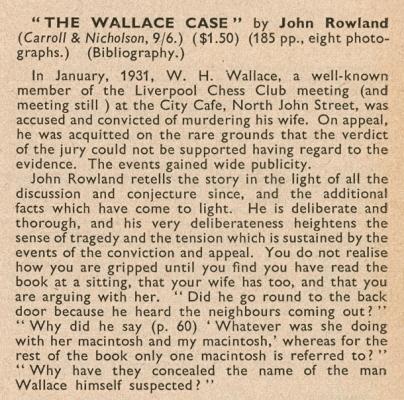
In a letter published on page 33 of the November 1949 issue J. T. Boyd commented:
‘Wallace was never a member of Liverpool C.C., but of Liverpool Central, which now meets at the Victoria Restaurant (or did two years ago). I well recall Gerald Abrahams laying three to one in crowns that the verdict would be upset on appeal, as it was.’
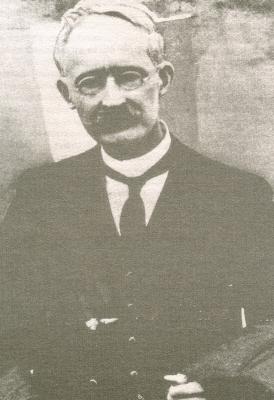
William Herbert Wallace
Pages 56-57 of the December 1949 CHESS carried the following letter from Hector Munro (‘Liverpool, 31 October 1949’):
‘I have been very much interested in the letters you have published about the Wallace case. I suppose I am specially qualified to speak about this affair, because I was the solicitor for Mr Wallace until he died, and also because I was (and still am) a member of the Liverpool Central Chess Club. Knowing, I think, at least as much about this case as anyone on earth, I feel it my duty to say that in my opinion Wallace was innocent. I always held this view, and its correctness has now been confirmed by everything that has come out since the trial.
Wallace worked for the Prudential, who supported his defence, which was also much aided by the Staff. After his acquittal in the Court of Appeal he was reinstated, and I remember that he always thought that he was entitled to be treated as innocent. In this I think he was perfectly right, and it is only fair to the Central Club to say that he certainly was not excluded.
Unfortunately, he was already a sick man before the trial, and had relied much on the care of his wife. Without her, his health rapidly deteriorated, and he died in a comparatively short time.
That this conviction was quashed by the unanimous decision of the Court of Criminal Appeal was, in my opinion a triumph of British justice.’
The Editor of CHESS, B.H. Wood, took a strong interest in the case. He and Harry Golombek were mentioned in the Acknowledgments on page 10 of the 1969 edition of Goodman’s book.
Munro contributed a further letter on pages 11-12 of the October 1974 CHESS. He related the case, commenting that he considered the jury’s verdict wrong. As regards chess, Munro wrote:
‘... the late Mr Wallace loved chess, but it is not breaking any professional confidence to reveal that he was the reverse of a strong player. With him, any opening he played could be described as “a closing”.’
Below is a letter from Jonathan Goodman which was published on page 38 of CHESS, November 1975:

A later television production:
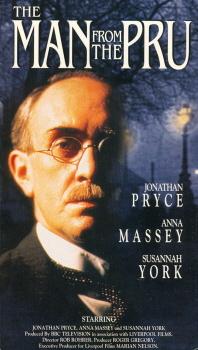
The Man from the Pru (BBC, 1989)
The Wallace case also prompted Goodman to write a work of fiction, The Last Sentence (London, 1978). On the evening of Monday, 19 January 1948 the secretary of the Bayswater Bridge Club received a telephone call from R.M. Quilliam requesting that James Willis, the husband of Delia, go the following evening to 25 Belgrave Mews East. See, in particular, pages 11-12. Moreover, in Shadow of an Alibi by John Rhode (New York, 1948) the setting was a billiards club in Minchington. The secretary, Tom Glossop, received a telephone call from R.M. Dymhaugh requesting that William Ridgewell, the husband of Julia, go the following evening to 25 Thorney Gardens East, Crossley. See, in particular, pages 1-2.

William Herbert Wallace
The chess issues in the Wallace murder case essentially revolve around four themes, all of which require further research:
C.N. 5995 asked about the chess output of Kenneth Gunnell, noting that he reported on page 191 of CHESS, March 1977:
‘I write a regular monthly column for Zugzwang! magazine, an occasional one (in French) for Le Courrier Des Echecs, and am a Contributing Editor of Mat!, although the last-named French-language monthly journal is not specifically concerned with postal play like the other two.’
An original solution to the Wallace murder case is proposed in The Killing of Julia Wallace by John Gannon (Stroud, 2012).
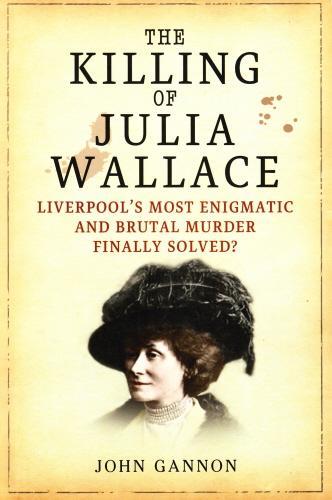
(7523)
Page 174 of John Gannon’s new book (C.N. 7523) states that the above-mentioned article in True Detective Mysteries was in the ‘December 1931 issue (vol. 16 no. 3)’, which has enabled us to acquire the magazine. The Wallace article, by Hubert Dail, ‘Noted Foreign Correspondent and Investigator’, appeared on pages 28-33 and 76-78. The first two pages:
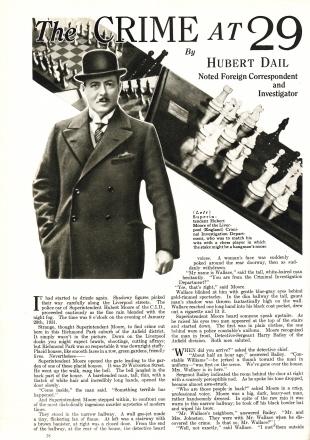
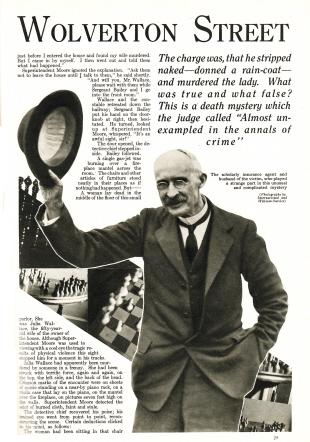
A photograph purporting to show Wallace’s ‘unusually long fingers’ was on page 33. The article has few references to chess, although there is, on page 78, an alleged remark by Moore to Wallace when charging him with murder:
‘“We believe”, he went on relentlessly, that you planned this crime and carried it out with the same skill and foresight you would use in playing a chess game. Your moves were perfectly timed.’
Our reading of the article is that Hubert Dail considered Wallace guilty, with Moore the hero of the account and not remotely ‘bone-headed’. Consequently, we do not understand Jonathan Goodman’s suggestion that Moore could have sued the magazine. Virtually nothing of what Goodman wrote about the True Detective Mysteries article corresponds to what appeared in it.
(7532)
Another book published in 2012:
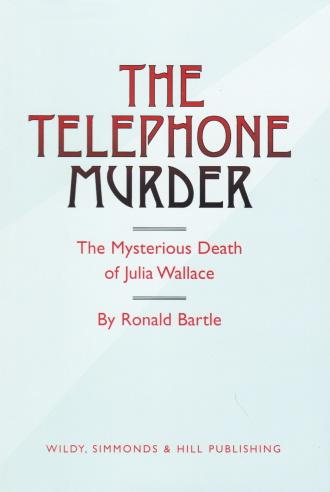
Page 305 of the 1969 edition of Jonathan Goodman’s book reported:
‘The Central Chess Club still exists, and Hector Munro is still a member; but the meetings are less frequent now – few people attend them.’
There was a footnote on the same page:
‘Since this was written the club has been disbanded.’
The 1987 edition (page 311) stated:
‘The Central Chess Club was disbanded some 25 years ago.’
‘The Wallace case remains the greatest of all unsolved crime puzzles. Either William Herbert Wallace devised the perfect crime with the skill of a practised chess-player, or else the real murderer planned it with diabolical cunning and nearly sent the mild insurance agent to the scaffold.’
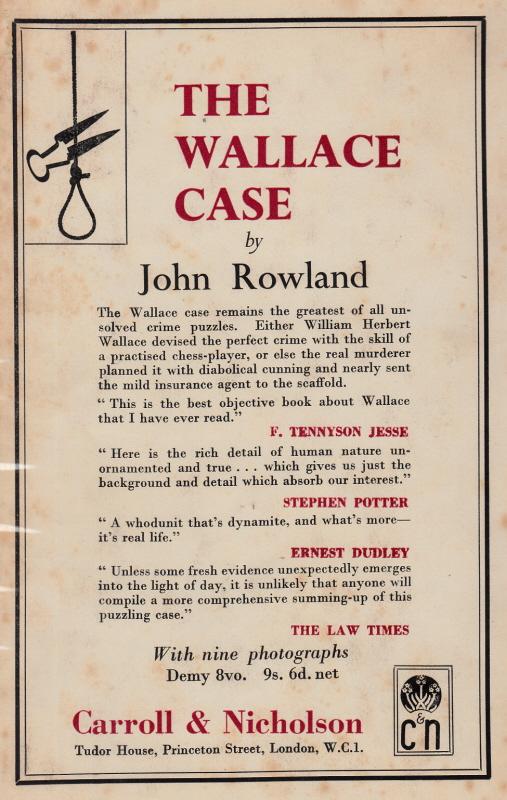
This advertisement was on the back of the dust-jacket of the 1951 edition of William Winter’s Chess for Match Players, which was brought out by the same publisher.
(8752)
The Wallace murder case was mentioned by Alistair Cooke at the start of an article, ‘The Hiss Case Reviewed’, on pages 6-7 of the Manchester Guardian, 1 May 1953:
‘Whenever the late James Agate was satiated with the theatre and bored with books and racehorses, he would call up a couple of lawyer friends and invite them to hash over for the hundredth time the events of that one evening in the life of Wallace, the Liverpool chessplayer, which, it can be cogently argued, produced either the perfect crime or the perfect miscarriage of justice.’
(8753)

Liverpool Echo, 3 February 1931, page 10
There is a reference to the Wallace case in Evil Under the Sun by Agatha Christie (first published in 1941). The passage, at the start of chapter five part five, is shown below from page 71 of a Christie anthology published by Hamlyn, London in 1970. The two police officers and Hercule Poirot have just questioned Kenneth Marshall, the murder victim’s husband:
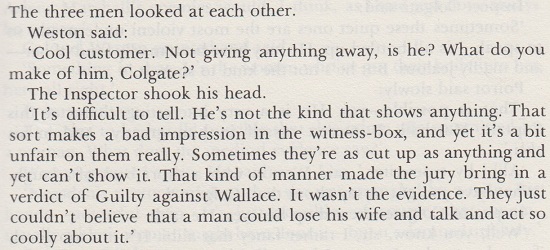
An on-line search reveals a mention of Wallace in Agatha Christie’s posthumous novel featuring Miss Marple, Sleeping Murder:
‘And Wallace, a quiet man whom the jury insisted did kill his wife, though the sentence was quashed on appeal.’
(10996)
Courtesy of the Keystone Archive, Olimpiu G. Urcan (Singapore) provides a better copy of the photograph of W.H. Wallace shown earlier in the present article.
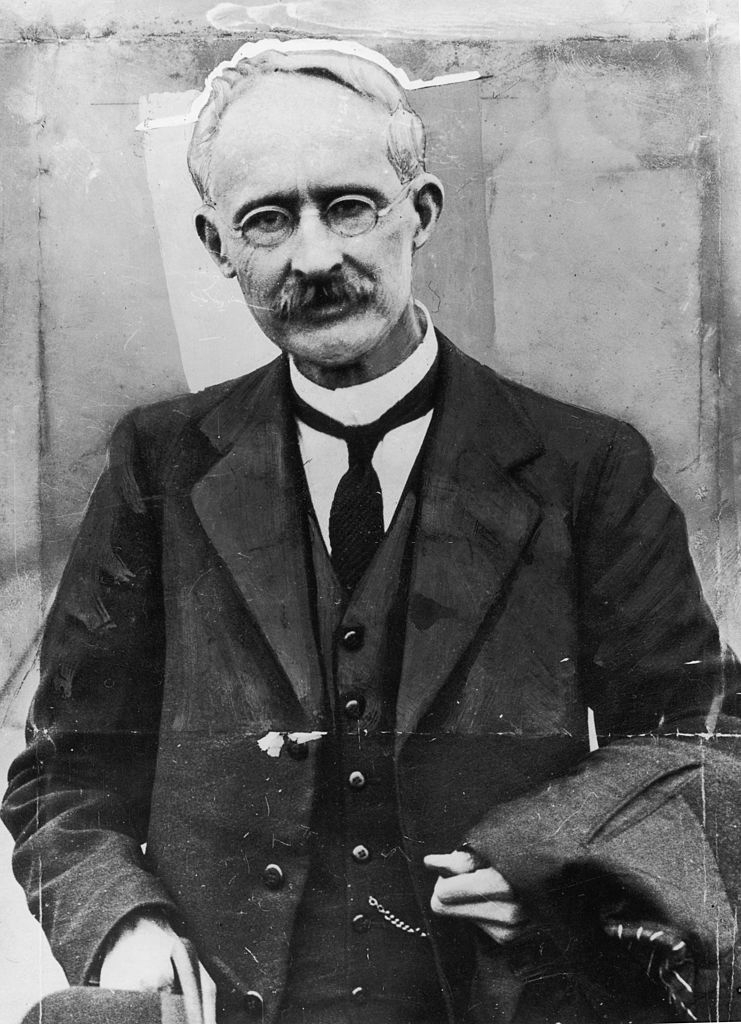
Addition on 13 October 2021:
The most recent book on the case is Checkmate The Wallace Murder Mystery by Mark Russell (London, 2021).
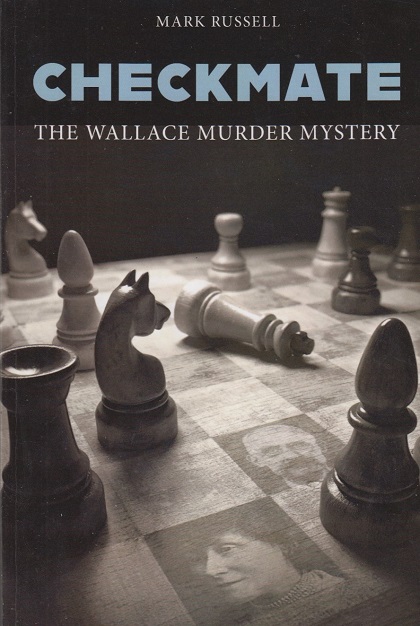
Addition on 23 April 2023:
Passing references to the Wallace case may be found in unexpected places. An example is the (unindexed) mention of Wallace in an entry dated 25 December 1975 on page 505 of The Kenneth Williams Diaries edited by Russell Davies (London, 1993).
Any chess-related information about William Herbert Wallace (1878-1933) and the Wallace murder case is of interest, and here we show a number of local newspaper cuttings from the time when he was a member of the Central Chess Club in Liverpool.
From the Liverpool Post & Mercury, 27 February 1930, page 14:
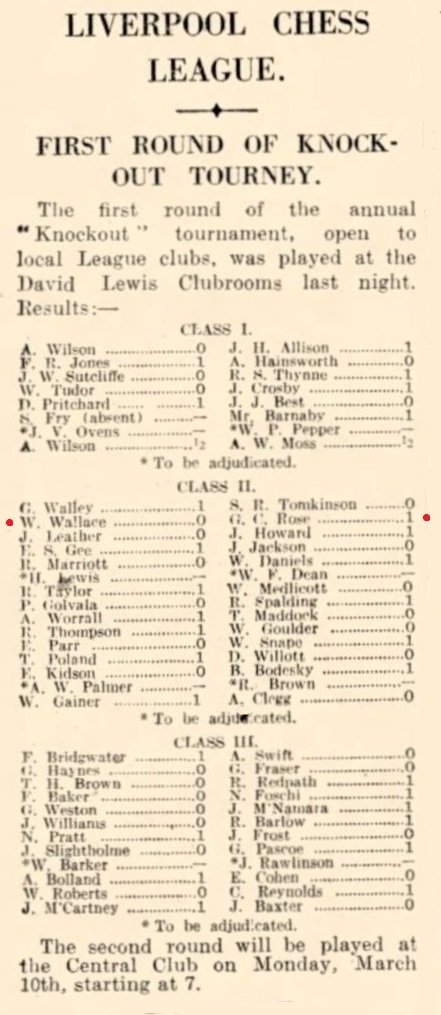
Five years previously, Akiba Rubinstein had visited the city for a series of chess engagements. As marked in red below, two of the newspaper reports, on 27 February and 6 March, included the name Wallace:
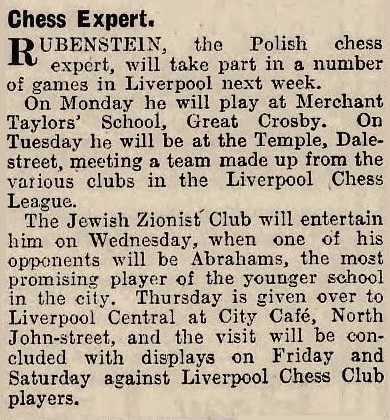
Evening Express (Liverpool), 20 February 1925, page 6
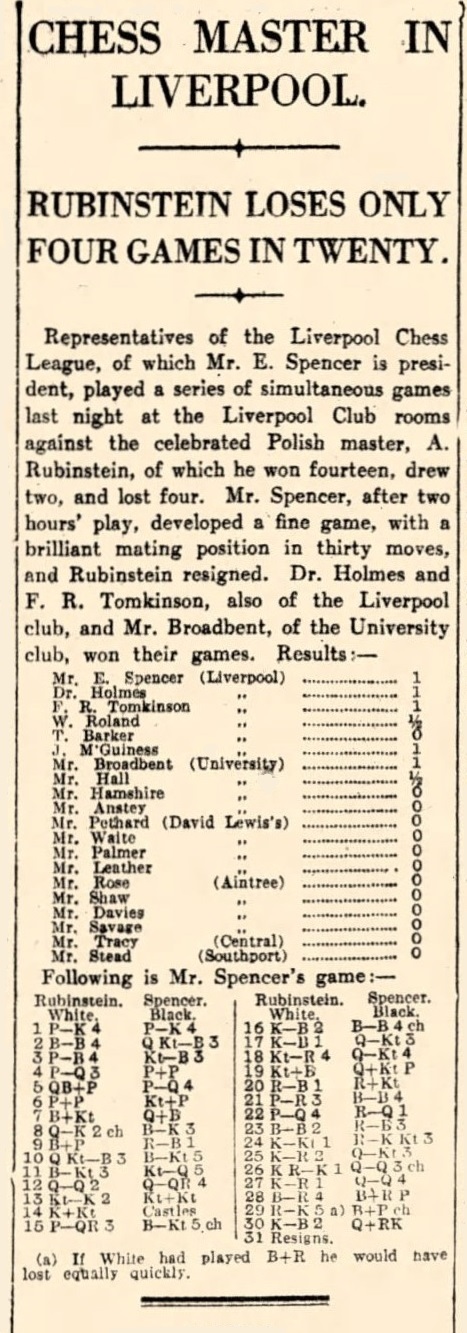
Liverpool Post & Mercury, 25 February 1925, page 10
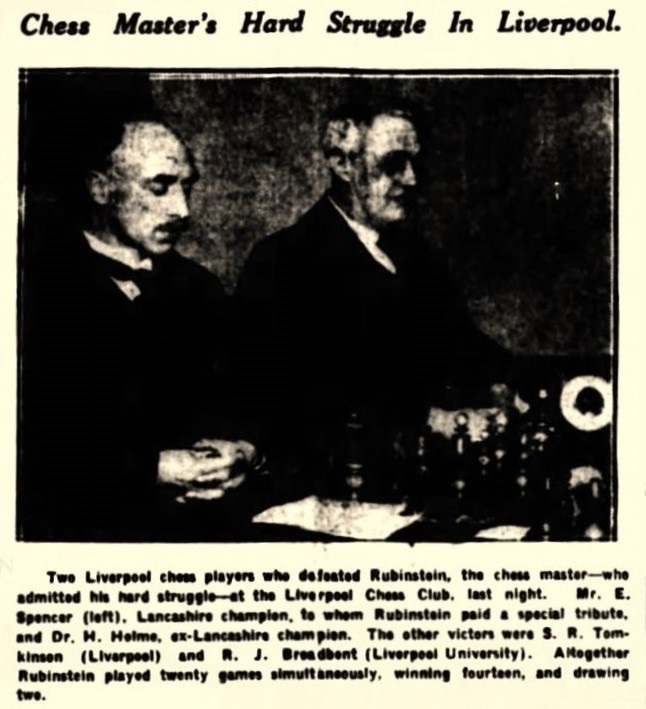
Liverpool Echo, 25 February 1925, page 7
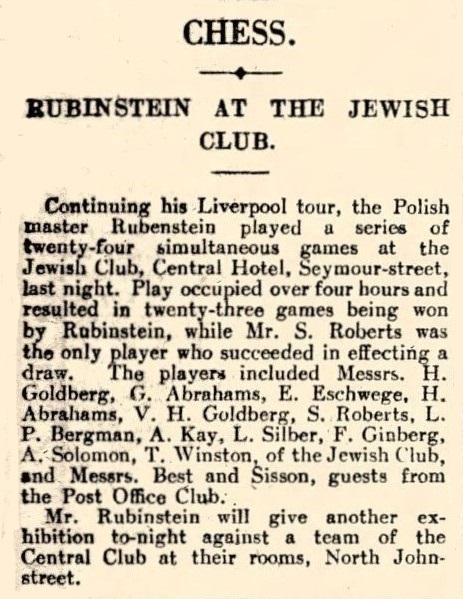
Liverpool Post & Mercury, 26 February 1925, page 11

Liverpool Post & Mercury, 27 February 1925, page 13
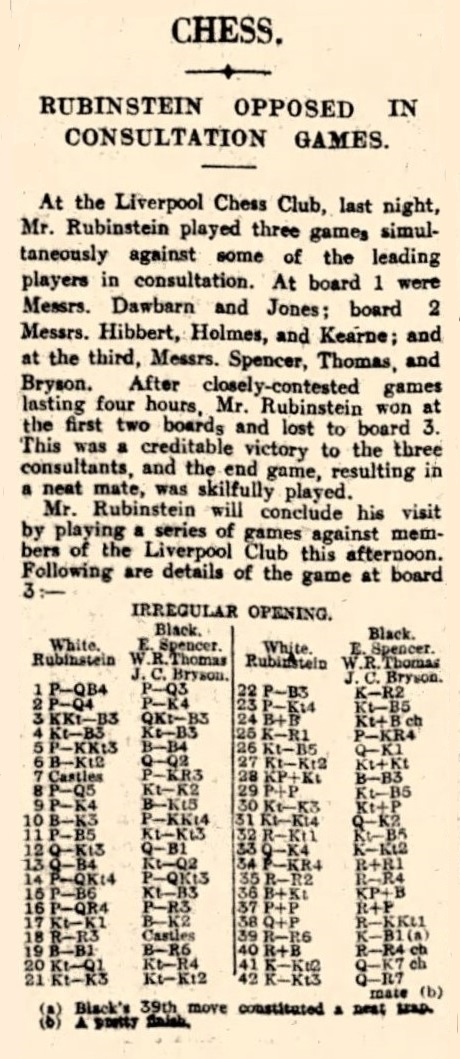
Liverpool Post & Mercury, 28 February 1925, page 9

Liverpool Post & Mercury, 28 February 1925, page 11
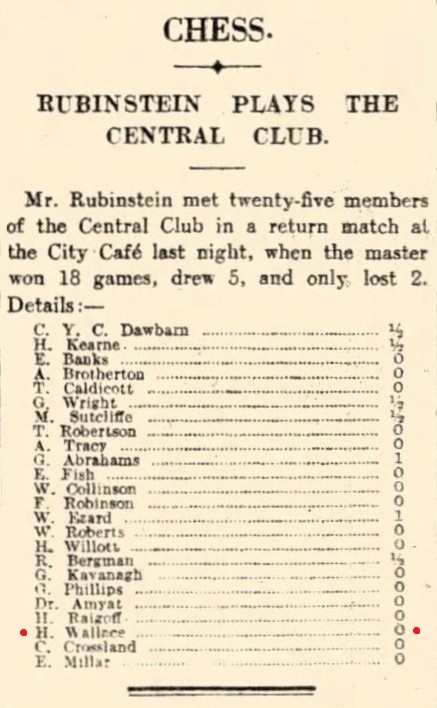
Liverpool Post & Mercury, 6 March 1925, page 10.
(12101)
Addition on 18 February 2025:
From C.N. 3980:
Below is the only photograph we recall from the New York, 1918 tournament, which was held at the Manhattan Chess Club. It appeared at the front of the tournament book and on page 252 of the December 1918 American Chess Bulletin. The caption quoted was in both sources.
‘Seated, from left to right: O. Chajes, A. Ettlinger (by window), J.R. Capablanca, F.J. Marshall, D. Janowsky, J.S. Morrison (obscured), B. Kostić, E.B. [or B.B.] Edwards
Standing, from left to right: A. Martinez (President), H.R. Limburg (Vice-President), R. Raubitschek (Treasurer), H. Helms (Umpire), W. Malowan (Secretary), J. Kraus (Serjeant-at-Arms)’
Several times an account of the Wallace case on YouTube by Mark John Maguire shows the photograph of the Manhattan Chess Club in 1918 to illustrate the Liverpool Central Chess Club in 1931:
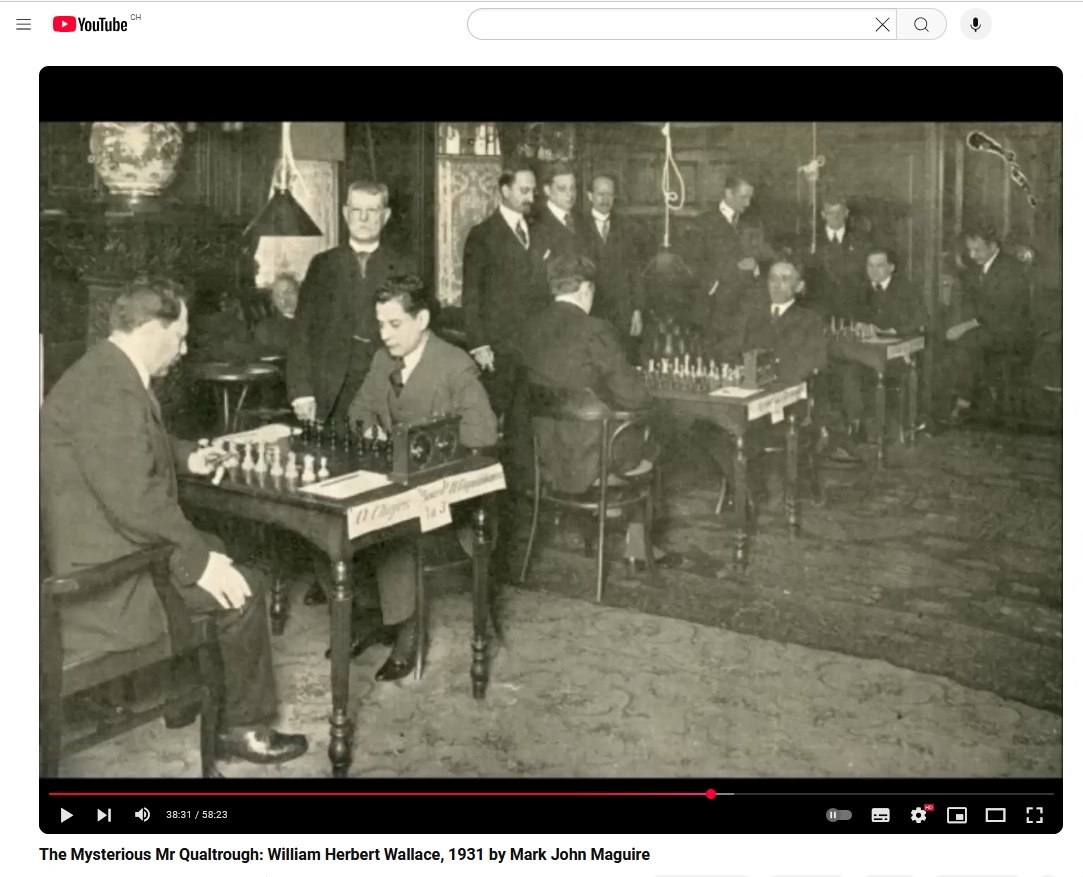
Rod Stringer has shown us a long list of factual errors in the Maguire presentation.
Addition on 21 February 2025:
Concerning Jonathan Goodman’s above-quoted remark about Wallace that ‘in the ’20s he had played in “simultaneous exhibition” matches when chess masters like Capablanca, Kashdan and Blackburne visited Liverpool and took on all-comers’, we can suggest a possible reason why Kashdan’s name was (improbably and erroneously) included. On page 5 of the Liverpool Post & Mercury, 10 February 1932 a brief report stated that Kashdan would be visiting the Liverpool Chess Club to give simultaneous displays the following Monday, Tuesday and Wednesday. Wallace died on 26 February 1933, and is not known to have played chess after 19 January 1931.
Addition on 24 February 2025:
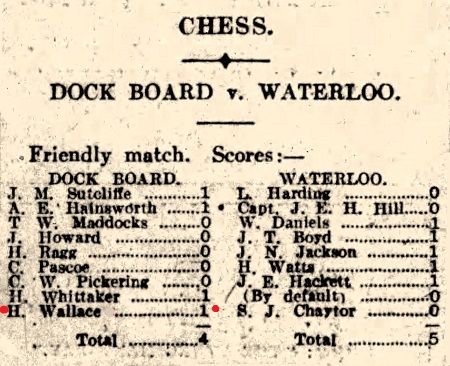
Liverpool Post & Mercury, 30 October 1926, page 10

Liverpool Post & Mercury, 26 October 1927, page 5.
S. Parry should read J.E. Parry. From page 152 of the April 1934 BCM:
‘We regret to announce the death of J.E. Parry, an old Lancastrian County player and former champion of the county. Mr Parry took a life-long interest in the game. He played in 1898 against Yorkshire in the first match under the aegis of the then newly-formed Lancashire Association. In 1925 he won the County Championship. His last appearance for the county was in March 1932. His club in recent years was Liverpool Central, the championship of which has been held by him.’
See also page 292 of A History of Lancashire Chess by M.J. Conroy (Heywood, 2009), which is headed ‘John Ellis Parry (1858-1934)’.
We are aware of no connection between J.E. Parry and R.G. Parry.
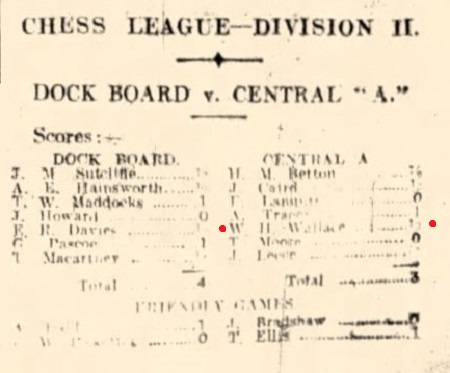
Liverpool Post & Mercury, 26 November 1927, page 13
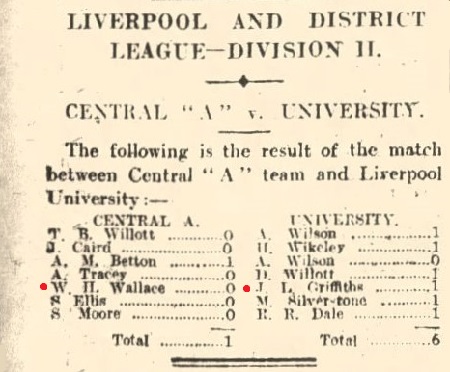
Liverpool Post & Mercury, 29 February 1928, page 11
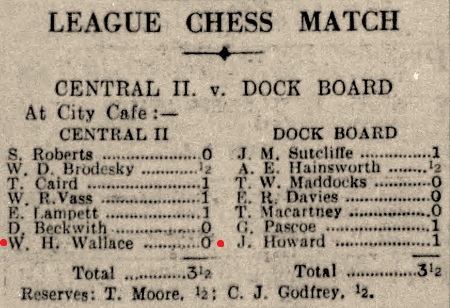
Liverpool Post & Mercury, 1 November 1930, page 11
Some references to chess in the above-mentioned book Checkmate by Mark Russell:
‘The Central Chess Club was formed in March 1893 and held its meetings at the Central Café. This was situated on the fourth floor of the Central Building, 43c North John Street. Here, the club would meet on Tuesday and Thursday evenings. The annual subscription was 2s 6d, and the membership numbered 44. The club's first secretary was F.L. Ball. They played regular fixtures against the Liverpool Chess Club, the Sandon Club and the Manchester Club on a home and away basis. In 1901 world chess champion Emanuel Lasker gave a lecture to a large and interested audience at the club. By 1909 the club had moved to 24B North John Street. Among those who visited the Central Chess Club were Polish Grandmaster Akiba Rubinstein, Bohemian chess master Oldřich Duras, leading British players Joseph Henry Blackburne and Amos Burn, and Russian chess master Eugene Znosko-Borovsky. The Liverpool Chess Club was originally founded in 1837 at the Lyceum Building, Bold Street and was claimed by its members to have been the oldest in the country. In 1931 that club's venue was No. 45, The Temple, Dale Street.’ (Page 13)
Further documentation is required. Regarding the location of the Club and some visiting masters, see the respective sections below.
‘William Herbert Wallace was a member of the club [the Central Chess Club], and although very passionate about the game was only a second- to third-class player.’ (Page 14)
‘Wallace requested a list of books.’ (Page 234). This refers to the period of Wallace’s incarceration pending his appeal. A footnote on the same page states: ‘Some of these 14 titles covered the subjects of chess, science, physics and astronomy.’
‘Wallace’s death did not even render a mention in the annual chess club report obituary section’ (Page 266).
Can a copy of each relevant year of the 1920s and 1930s be found? In the photograph section between pages 46 and 47 of his book Mark Russell reproduces the (brief) club report dated 21 September 1933.
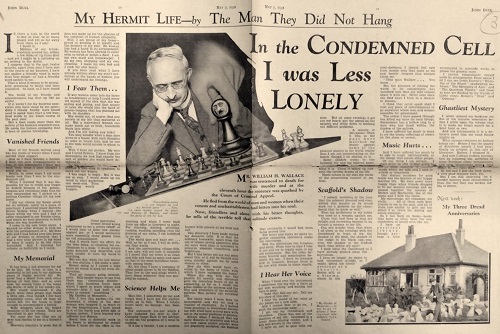
The full texts of the five John Bull articles which appeared under Wallace’s name can be viewed online at the website of the Julia Wallace Murder Foundation, where they appear courtesy of Rod Stringer (who, in turn, has authorized us to show material here). The series began with an editorial introduction (i.e. not by Wallace) on page 7 of the 16 April 1932 issue, under the heading ‘The Most Amazing Human Document Ever Written’. That article included the following sentence, all three components of which are incorrect:
‘He was one of the chief members of a leading chess club and a masterly player.’
Below is a passage from page 20 of the 23 April 1932 edition:
‘Take the case of the restaurant at which I always have lunch.It was revealed at my trial that the supposed murderer of my wife successfully got me out of the way at the hour of the crime by telephoning to the captain of my chess club a message asking that I should proceed to an address which afterwards proved to be non-existent.
The chess club rooms are in the premises of my luncheon restaurant, and there for years I had my midday meal with my fellow-members.
Yet I was ostracised on the first day I came back – and still am.
The men with whom I had won and lost at play so often, with whom I had lunched daily and exchanged views on topics of the day over our coffee and cigarettes, pass me with heads tilted away from me.
Their eyes see me not when they enter the room; they look through me, a lone figure at my table, while I eat my meal. If I were invisible I could not be more completely ignored.
This goes on day after day. But I won’t be frozen out. Not once have I failed to go there. And I’ll keep on going. These are my silent accusers. They must be faced. If I feared to encounter them I should know that I was a coward. I should despise myself.’
The text below comes from page 21 of John Bull, 7 May 1932:
‘I get out my chessboard and chessmen. Chess was one of the passions of my life. Liverpool is a great chess-playing centre, and I was well known in the circle.
I have no-one to play with me now. But on some evenings I get out my board, put the pieces on the squares, and settle down to working out difficult problems.
A minute or two passes. Then I, who in the past have matched my brains against some of the greatest players in the world, realise that I am not concentrating on the board, though I sit staring at it.
Some shadow seems to rise between me and my beloved game.
I suddenly draw back. I know what it is. Chess is mixed up now with the terrible drama of my life.
There echoes in my ears the words of the prosecuting counsel at my trial.
“I submit, members of the jury, that the prisoner planned and committed this murder as he would work out a problem on the chessboard that he knew so well.”
Even my proficiency in my hobby was used as a weapon against me.
Chess that had been so long my delight and recreation became in an instant a menace to my life.
Can you wonder then, that when I sit alone in the evenings with the chessboard in front of me, the shadow of the dock, the shadow of the judge in the black cap – yes, even the shadow of the scaffold itself, rises before my eyes?
I push away the chessboard as I have already pushed away the microscope.’
From The Trial of William Herbert Wallace by W.F. Wyndham Brown (London, 1933), pages 297-320:
‘As a young man I had played chess. In Liverpool I continued this pastime, and the only times I left my wife alone in our little home was to visit the Chess Club at the City Cafe, to deliver my lectures at the Technical College, or to attend to my insurance business. On all other occasions my wife was my inseparable companion.’ (Page 300) The source specified was ‘Wallace’s “Life Story”’. Additional text. See also pages 226-230 of the 2023 book (second edition) Move to Murder by Antony M. Brown. He stated: ‘After the trial, Wallace wrote a 55-page memoir, which was the foundation of six articles that appeared in Tit-Bits magazine in the summer of 1931.’
‘6 November 1930. The tournaments (chess) are now up, and I see I am in class three. This about represents my strength of play. I suppose I could play better, but I feel it is too much like hard work to go in for chess whole-heartedly, hence my lack of practice keeps me in a state of mediocrity. Good enough for a nice game, but no good for really first-class play.’ (Page 301) Diary entry by Wallace.
‘My microscope, my chessmen, my violin. ... All of them such dear friends to me in the past, and all of them now unable to give me the solace I so crave for during my lonely evenings.’ (Page 318)
The heading on page 309, covering the remainder of the book, was: ‘The following is a selection from articles by Wallace which appeared in the Press.’ No sources were specified.
We have found no instance where Wallace named any chess master.
From pages 8-9 of John Bull, 14 May 1932:
‘I see clearly in the freedom of my bedroom the faces of the warders of the death-watch at the condemned cell – the faces that will never leave me, day or night, until the end comes.
I see myself again playing chess with them. ... I wonder – do they still play chess? I taught them.’
Concerning Wallace’s claim that members of his chess club ignored him after his conviction was quashed, we have seen no response or rebuttal by any of the players.

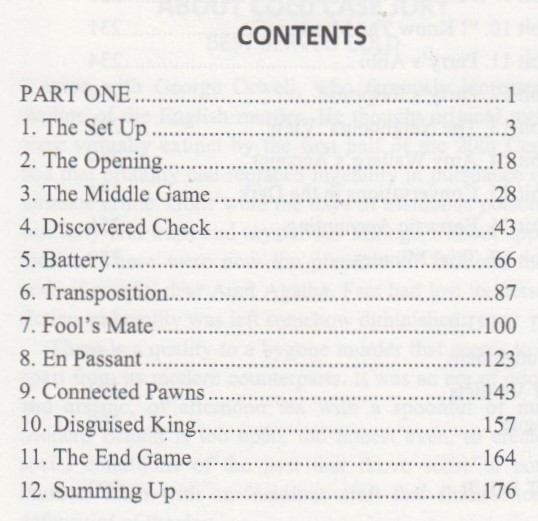
An introductory note (unnumbered page) by the author states:
‘In reconstructing a cold case theory I prefer to use narrative’s present tense – dialogue. Some of it is verbatim, drawn from trial or inquest testimony. The rest is more a work of imagination, yet always governed by the facts and theories of the case, connecting the evidential dots by plausible lines of narrative.’
Concerning the history and location of the Central Chess Club (see the above quote from page 13 of Mark Russell’s book), assistance will be welcomed in expanding the chronology below:

Liverpool Mercury, 13 August 1886, page 1
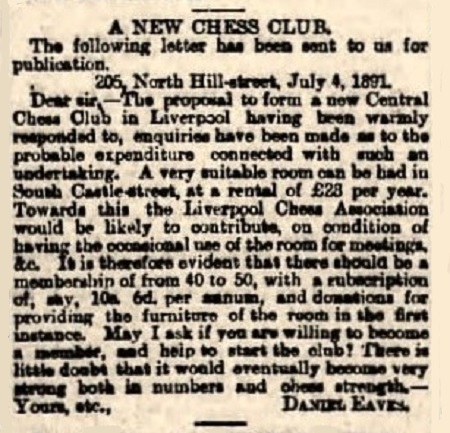
Liverpool Weekly Mercury, 11 July 1891, page 4
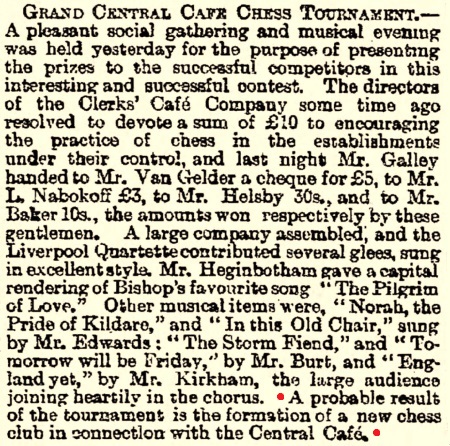
Liverpool Mercury, 22 April 1892, page 6
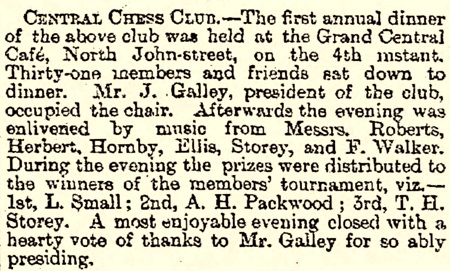
Liverpool Mercury, 12 May 1894, page 7
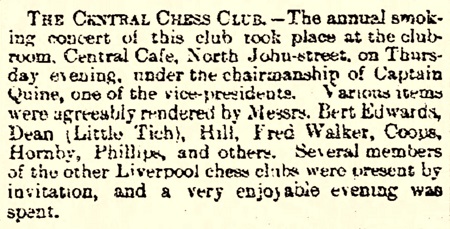
Liverpool Mercury, 1 November 1900, page 8
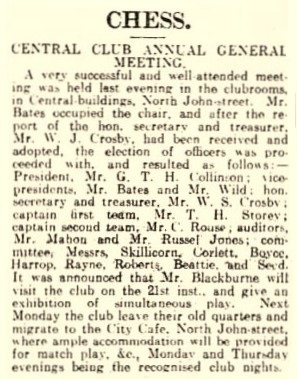
Liverpool Daily Post and Liverpool Mercury, 2 October 1909, page 5
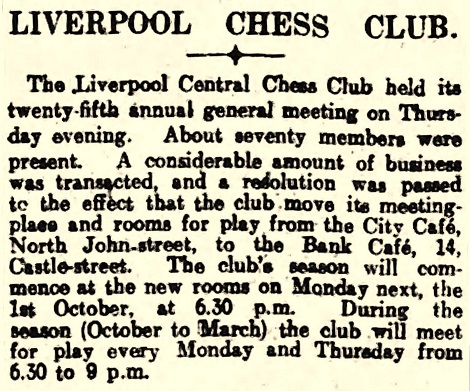
Liverpool Post & Mercury, 29 September 1917, page 3
From page 365 of the November 1917 BCM:
‘The 25th annual meeting of the Liverpool Central Club was held on 27 September, about 70 members being present. The Club now meets at the Bank Café, 14 Castle Street. The new rooms are very central, and an improvement on the late quarters.’

Liverpool Post & Mercury, 15 October 1919, page 8

Evening Express, 3 April 1922, page 3
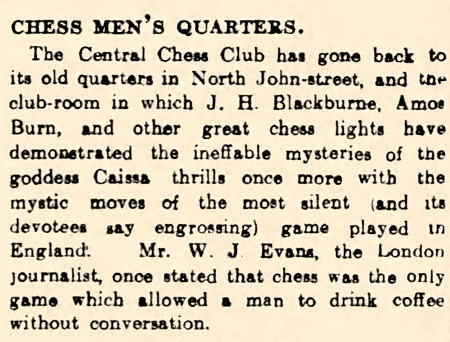
Liverpool Post & Mercury, 30 October 1922, page 5
A selection of reports on masters’ visits to the Central Chess Club:
Nicolai Jasnogrodsky:
Page 3 of the Morning Post, 4 September 1893 (a report on a simultaneous exhibition, including some blindfold games).
Emanuel Lasker and Dawid Janowsky:
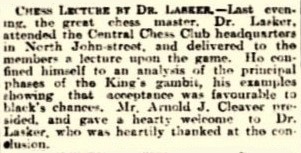
Liverpool Daily Post, 20 March 1901, page 6
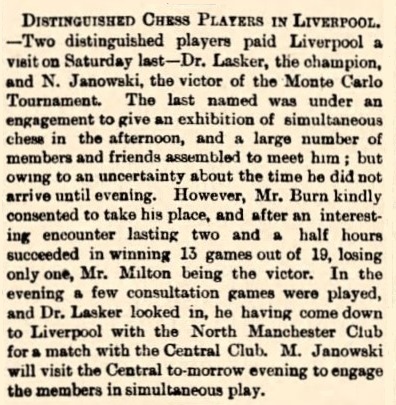
Liverpool Mercury, 12 November 1901, page 8

Liverpool Daily Post, 12 November 1901, page 8
Joseph Henry Blackburne:
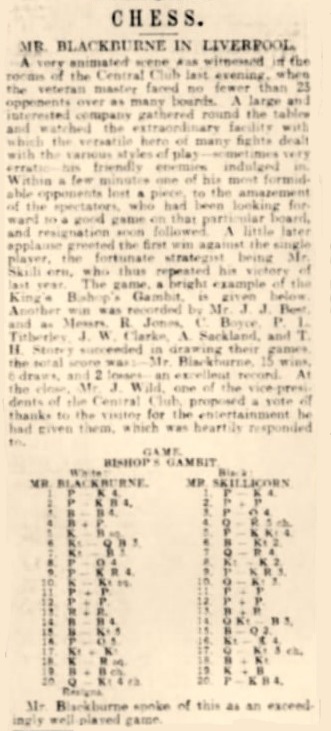
Liverpool Daily Post and Liverpool Mercury, 20 October 1905, page 5
Blackburne v Skillicorn: 1 e4 e5 2 f4 exf4 3 Bc4 d5 4 Bxd5 Qh4+ 5 Kf1 g5 6 Nc3 Bg7 7 Nf3 Qh5 8 d4 Ne7 9 h4 h6 10 Kg1 Qg6 11 hxg5 hxg5 12 Rxh8+ Bxh8 13 Bc4 Nbc6 14 Bb5 Bd7 15 d5 Ne5 16 Nxe5 Qb6+ 17 Kh1 Bxe5 18 Bxd7+ Kxd7 19 Qg4+ f5 20 White resigns.
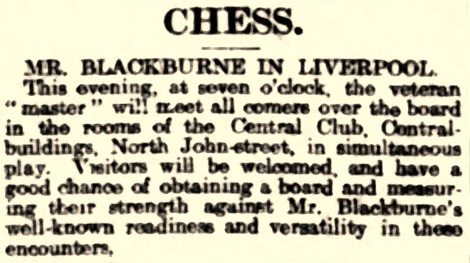
Liverpool Echo, 11 October 1906, page 5
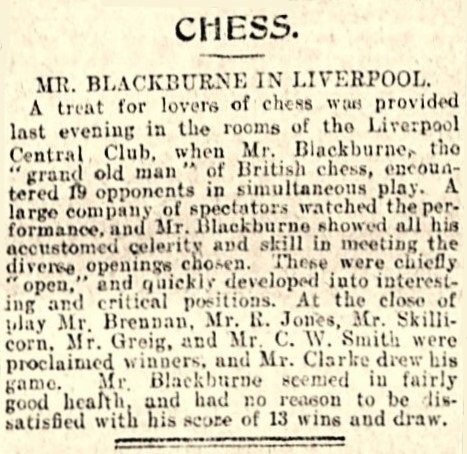
Evening Express (Liverpool), 12 October 1906, page 7

Liverpool Daily Post and Liverpool Mercury, 12 October 1906, page 8
Blackburne v Clarke: 1 e4 e5 2 d4 exd4 3 c3 dxc3 4 Bc4 cxb2 5 Bxb2 d6 6 Nf3 Be6 7 Bxe6 fxe6 8 Qb3 Nd7 9 Qxe6+ Qe7 10 Qc4 d5 11 Qxd5 Ngf6 12 Bxf6 Nxf6 13 Qxb7 Qb4+ 14 Qxb4 Bxb4+ 15 Nbd2 Nxe4 16 O-O-O Nxd2 17 Rhe1+ Kf7 18 Nxd2 Bxd2+ 19 Rxd2 Rad8 20 Rc2 Rd7 21 Re3 Rc8 22 Rf3+ Kg8 23 Rc6 Rf8 Drawn.

Liverpool Courier, 25 October 1912, page 9
The cutting below records a draw by Samuel Beattie against Blackburne:
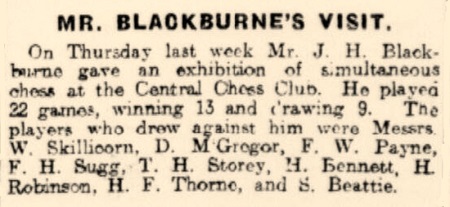
Liverpool Courier, 1 November 1912, page 3
Oldřich Důras:
Undated games played at the Central Club can be found in the Liverpool Daily Post and Mercury as follows: 23 January 1911, page 6; 30 January 1911, page 3; 7 February 1911, page 7.
Jacques Mieses, with Gerald Abrahams mentioned:
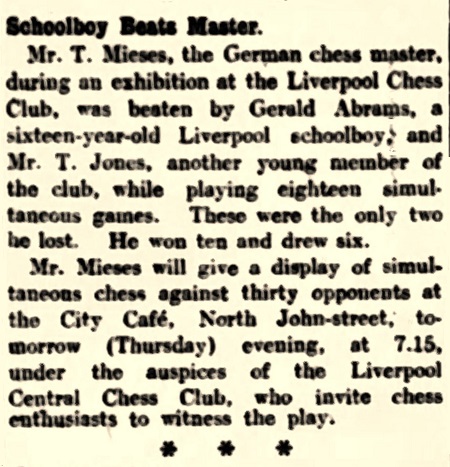
Liverpool Echo, 12 December 1923, page 4.
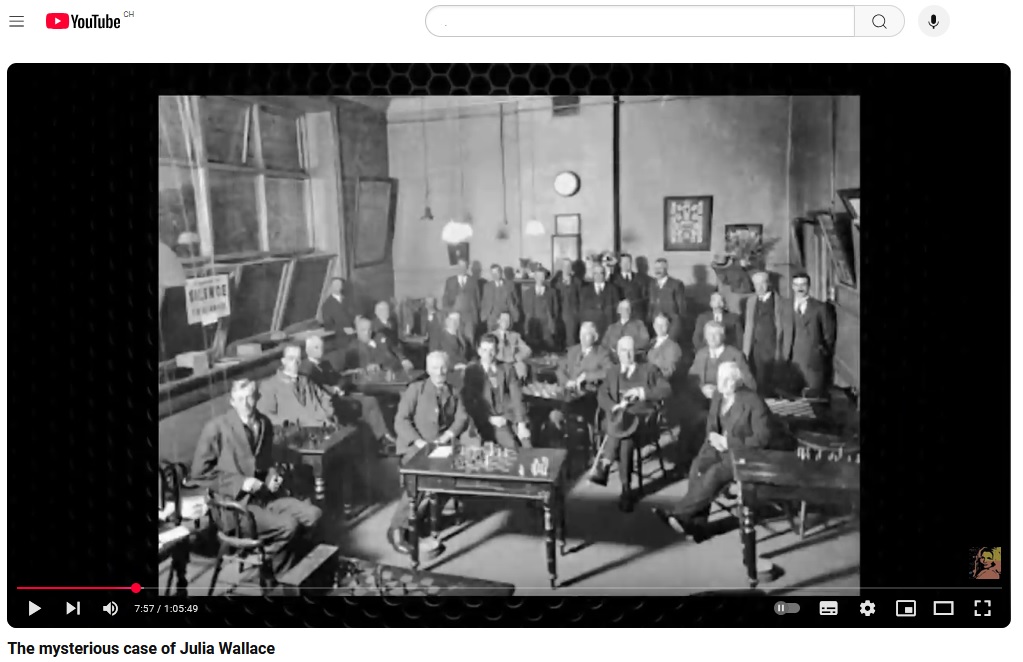
‘The mysterious case of Julia Wallace’ uses a chess photograph taken in Australia.
Addition on 27 February 2025:
A searchable PDF version of John Gannon’s unabridged transcription of the 1931 trial of W.H. Wallace is available online.
Rod Stringer has sent us Wallace’s will, made on 9 February 1933.
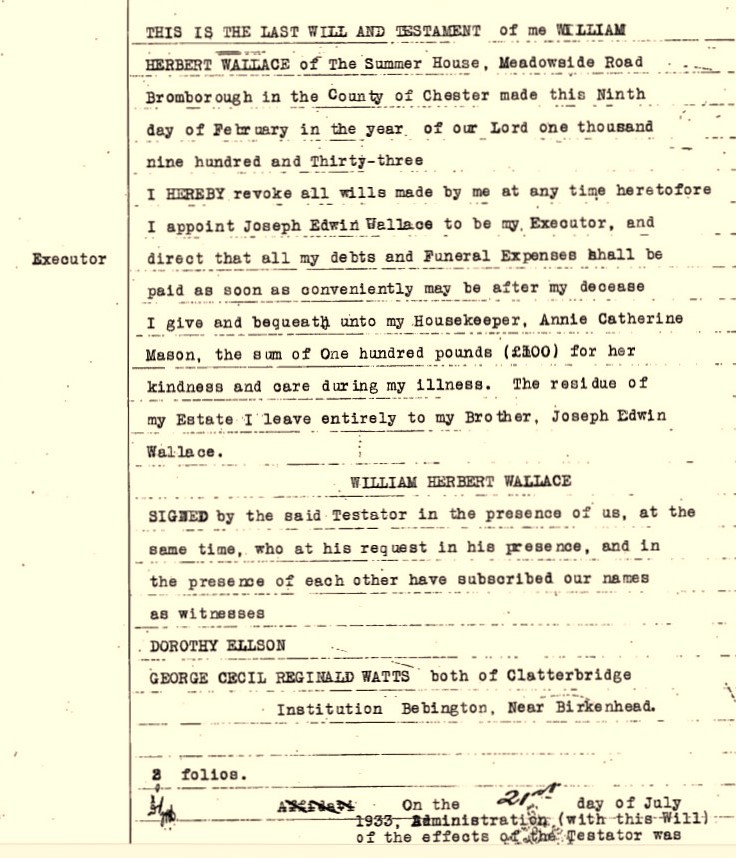
Addition on 8 March 2025:
The death of Samuel Beattie was recorded on page 4 of the Liverpool Daily Post, 12 February 1946:

Addition on 8 March 2025:
We seek information about Wallace’s opponent in his last ‘serious’ game, on 19 January 1931, during which Samuel Beattie gave Wallace the telephone message from ‘R.M. Qualtrough’. Often referred to in books only by his surname, he was named as Thomas McCartney in, inter alia, Mark Russell’s Checkmate. Page 17 referred to ‘Thomas McCartney Witness Statement, 26 January 1931’; is a copy available?
In Liverpool newspapers we have noted about 40 chess matches (1924-39) in which a player named ‘T. McCartney’, ‘T. M’Cartney’ or ‘T. Macartney’ played for the Dock Board Chess Club in Liverpool. Whereas the early instances tended to have ‘T. Macartney’, most reports in the 1930s put ‘T. McCartney’. In two or three of the earlier ones, ‘J. M’Cartney’ appeared, as in the report given above from the Liverpool Post & Mercury, 27 February 1930, page 14.
As also shown earlier (the Liverpool Post & Mercury, 1 November 1930, page 11), in a match between Central II and Dock Board, both Wallace and ‘T. Macartney’ lost on their respective boards.
Rod Stringer has supplied the following extract from Kelly’s Directory, 1931 (all the McCartneys in the Liverpool area):
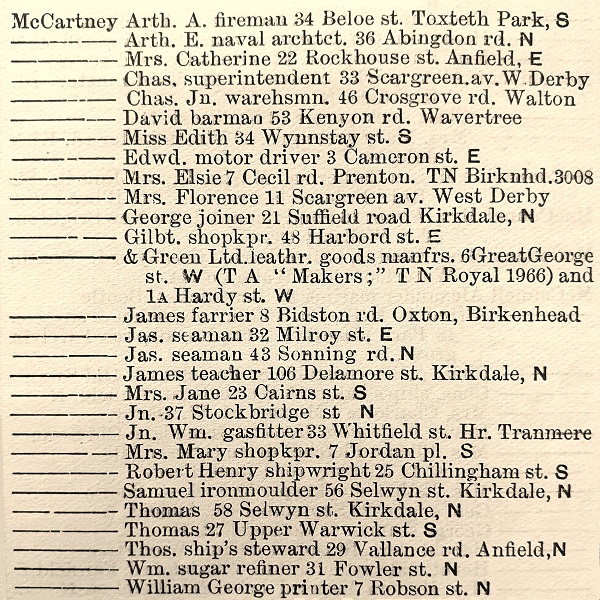
Our description of Wallace v McCartney as the former’s ‘last “serious” game’ is not meant disparagingly. The word ‘serious’ takes into account the statement on pages 25-26 of Antony M. Brown’s book that after defeating McCartney ‘Wallace agreed to play a “skittle” game with another member. The rapid game, for sharpening chess reflexes rather than encouraging deep thought, lasted barely 20 minutes. He then agreed to take the tram back to Anfield with James Caird.’
An extract from the above-mentioned transcription, James Caird being cross-examined by Roland Oliver, K.C.:
353. ‘Do you know what time Mr Wallace finished his game that night or about what time?’
‘Well, it would be about a quarter to ten because I do not think he played another game afterwards. The Café keeps open to ten or a quarter past and it was near the end.’
354. ‘I am instructed it was nearly half past.’
‘It may have been but I could not say about that.’
Information is requested on James Caird of the Central Chess Club, one of the members whom Wallace appears to have known best. Russell’s book (page 16) states:
‘James Caird was a grocer by trade, his shop being at 113 Stanley Road, Kirkdale. He won the Class 1 Chess Championship in 1933.’
His home address was 3 Letchworth Street. (See, for instance, the above-mentioned trial transcription and page 16 of the Liverpool Echo, 22 April 1931.) It was a two- or three-minute walk from Wallace’s house.
The latest book featuring the Wallace murder case is an elegant novel by Anthony Quinn, The Mouthless Dead:
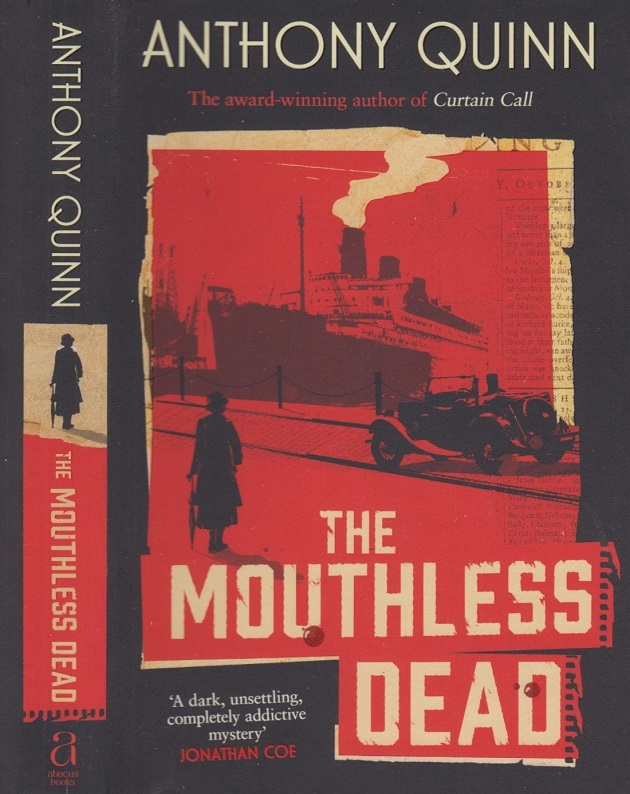
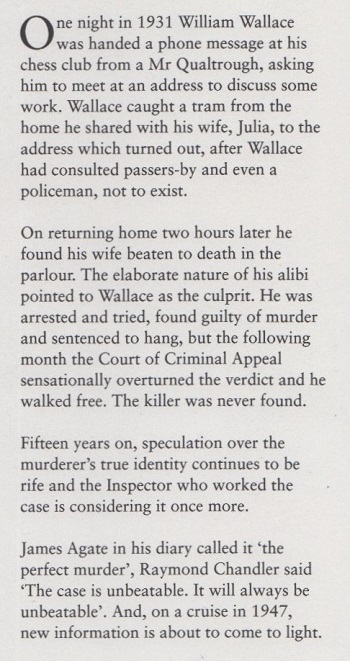
The phrase ‘the mouthless dead’ is from the first line of a posthumously published poem by Charles Hamilton Sorley (1895-1915).
(12133)
In the United Kingdom a number of individuals convicted of capital offences played chess against prison warders. The following appeared under W.H. Wallace’s name on pages 8-9 of John Bull, 14 May 1932:
‘I see clearly in the freedom of my bedroom the faces of the warders of the death-watch at the condemned cell – the faces that will never leave me, day or night, until the end comes.
I see myself again playing chess with them. ... I wonder – do they still play chess? I taught them.’
Wallace described on page 19 of John Bull, 30 April 1932 how he was publicly perceived:
‘I was not only “the man Wallace” but “another Rouse”.
He was referring to Alfred Arthur Rouse (1894-1931), the ‘blazing car murderer’.
(12134)
The remainder of C.N. 12134 has further information on A.A. Rouse and on other cases.
Addition on 21 April 2025:
In a statement dated 25 January 1931 Detective Superintendent Hubert Moore asserted (for unclear reasons) regarding Wallace:
‘The motive is obscure, but a solution is probably to be found in his affliction – he has only one kidney and that is failing – which is often associated with various forms of insanity.’
Quoting from page 234 of Checkmate The Wallace Murder Mystery by Mark Russell (London, 2021), our feature article notes that in May 1931 W.H. Wallace, awaiting his appeal against execution, requested a list of books – chess being one of the subjects.
Wallace’s conviction was quashed by the Court of Criminal Appeal on 19 May 1931, and we are grateful to Rod Stringer (Liverpool, England) for providing documentation from later that month:



The other book (Modern Chess Strategy, published anonymously by the Daily Express) was discussed in C.N. 1743. See Chess Jottings. Publication was announced on page 5 of the Daily Express, 17 January 1931, i.e. three days before Julia Wallace was killed:

(12148)
A slightly earlier advertisement was published on page 15 of the Daily Express, 14 January 1931:

Page 94 of Thomas Frère and the Brotherhood of Chess by Martin Frère Hillyer (Jefferson, 2007) has this wouldpile:

The above passage, with ‘would’ four times, is beaten by page 71 of Checkmate by Mark Russell, a 2021 book on the Wallace murder case:
‘That evening, he [Winston Churchill] would address a meeting at the Philharmonic Hall where he would speak in support of Patrick Buchan-Hepburn and the By-election that would take place on 5th February. The talk that would spread throughout the city would not be about Churchill’s visit, however ...’
Concerning recourse to ‘would’ in historical narratives, an addition comes from page 178 of The Killing of Julia Wallace by John Gannon (Stroud, 2012):

(12153)
Note: extensive additions have been made to this article since it first appeared here on 3 February 2008.
Latest update: 11 August 2025.
To the Chess Notes main page.
To the Archives for other feature articles.
Copyright: Edward Winter. All rights reserved.